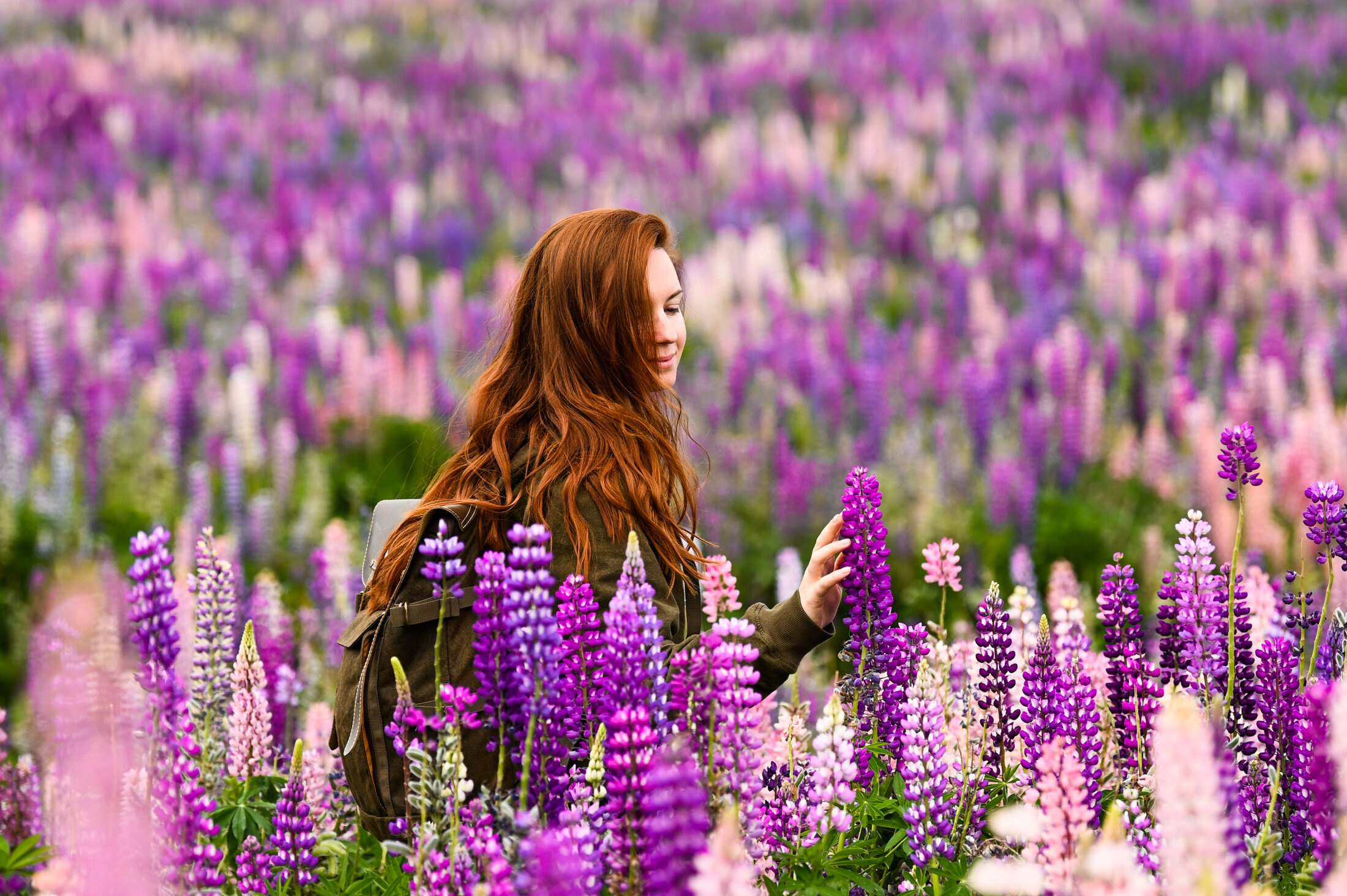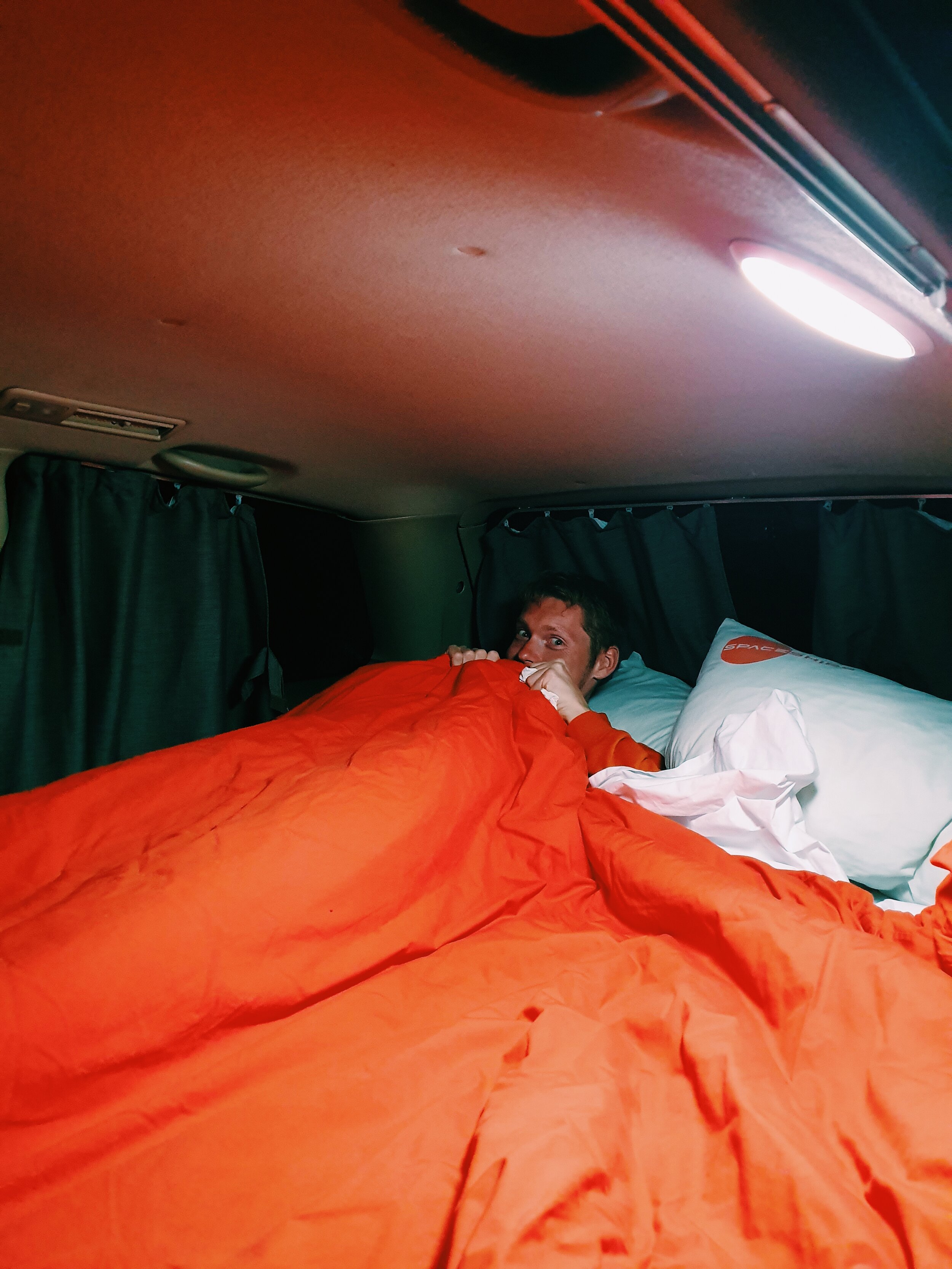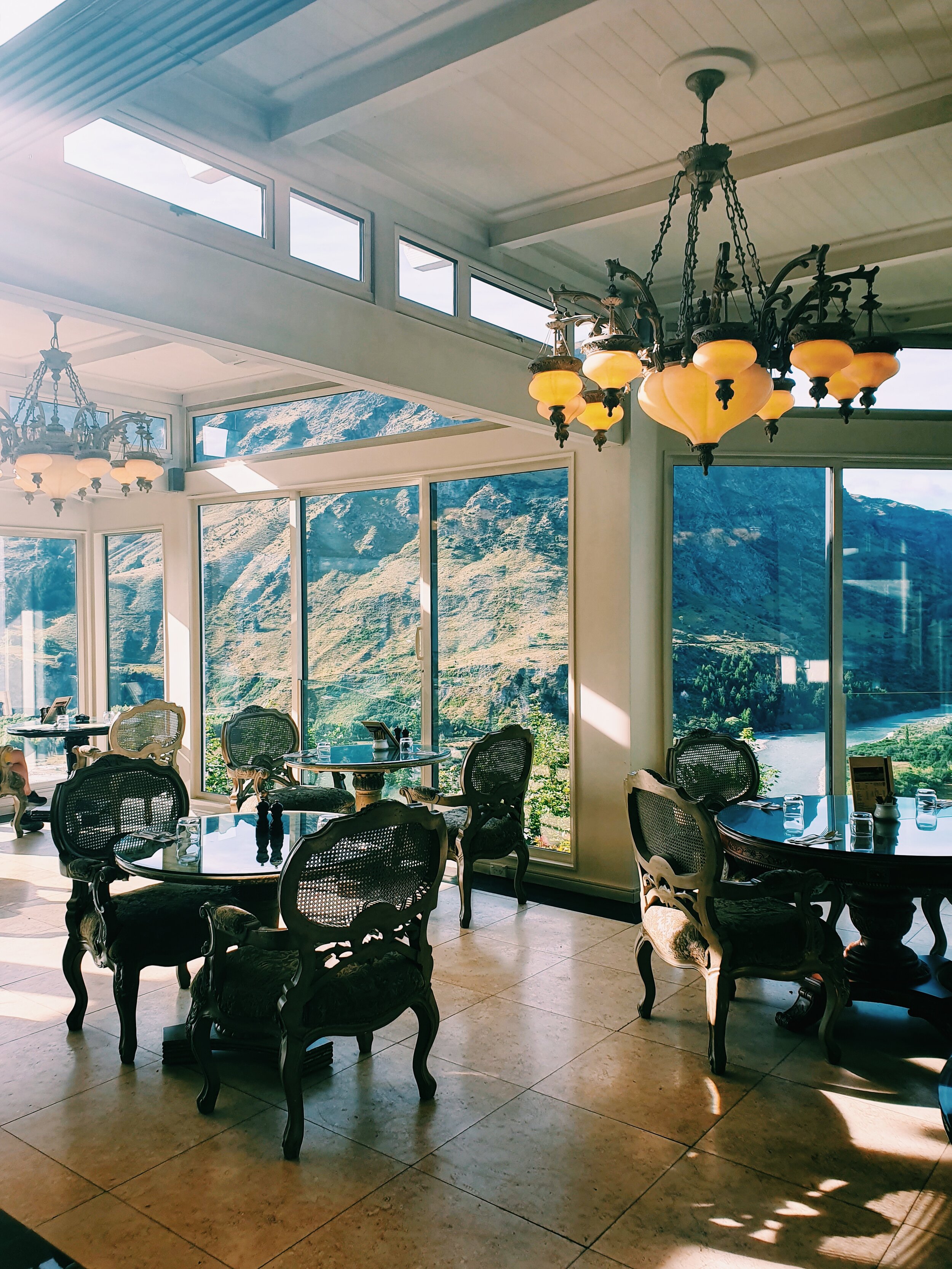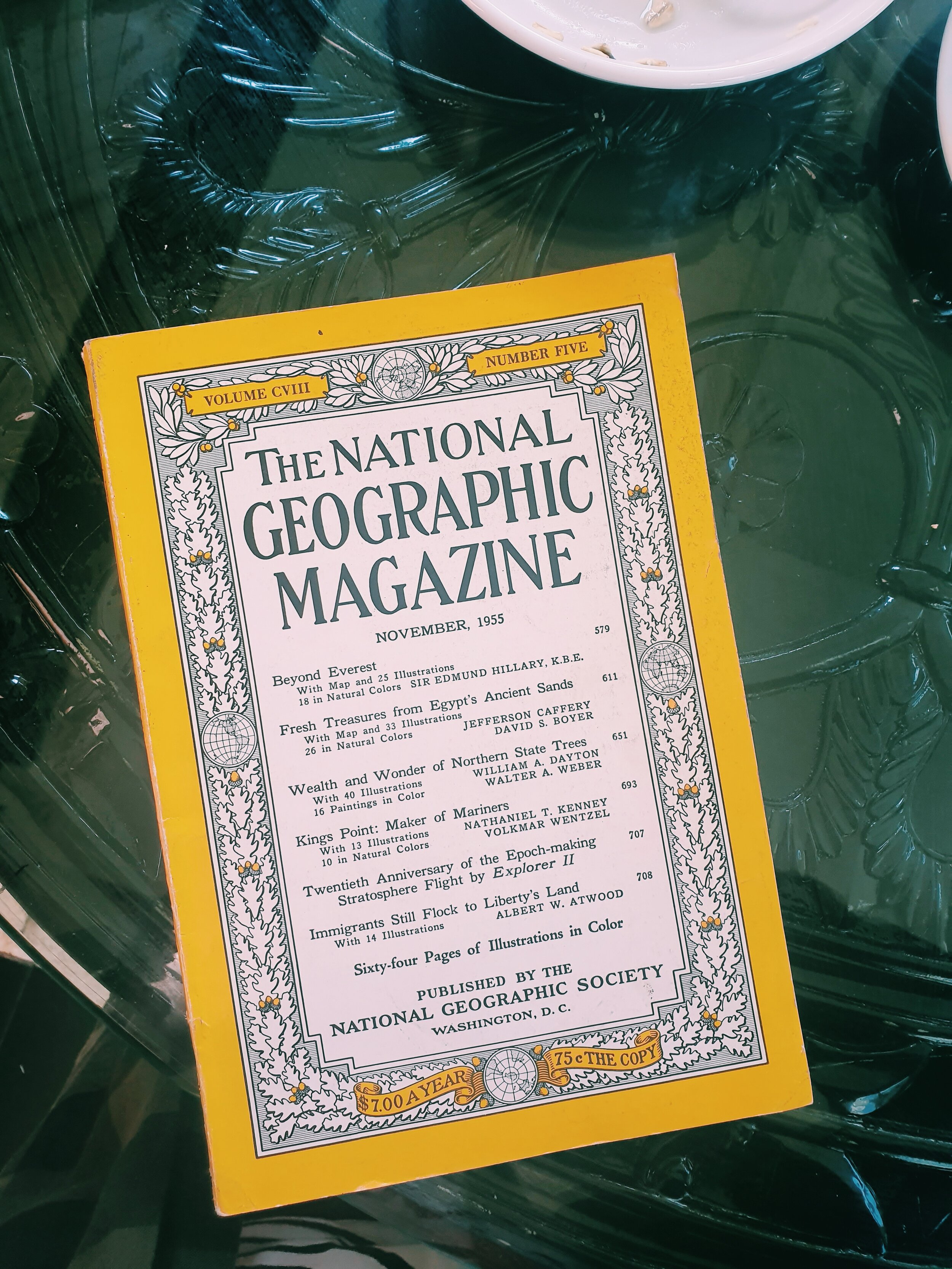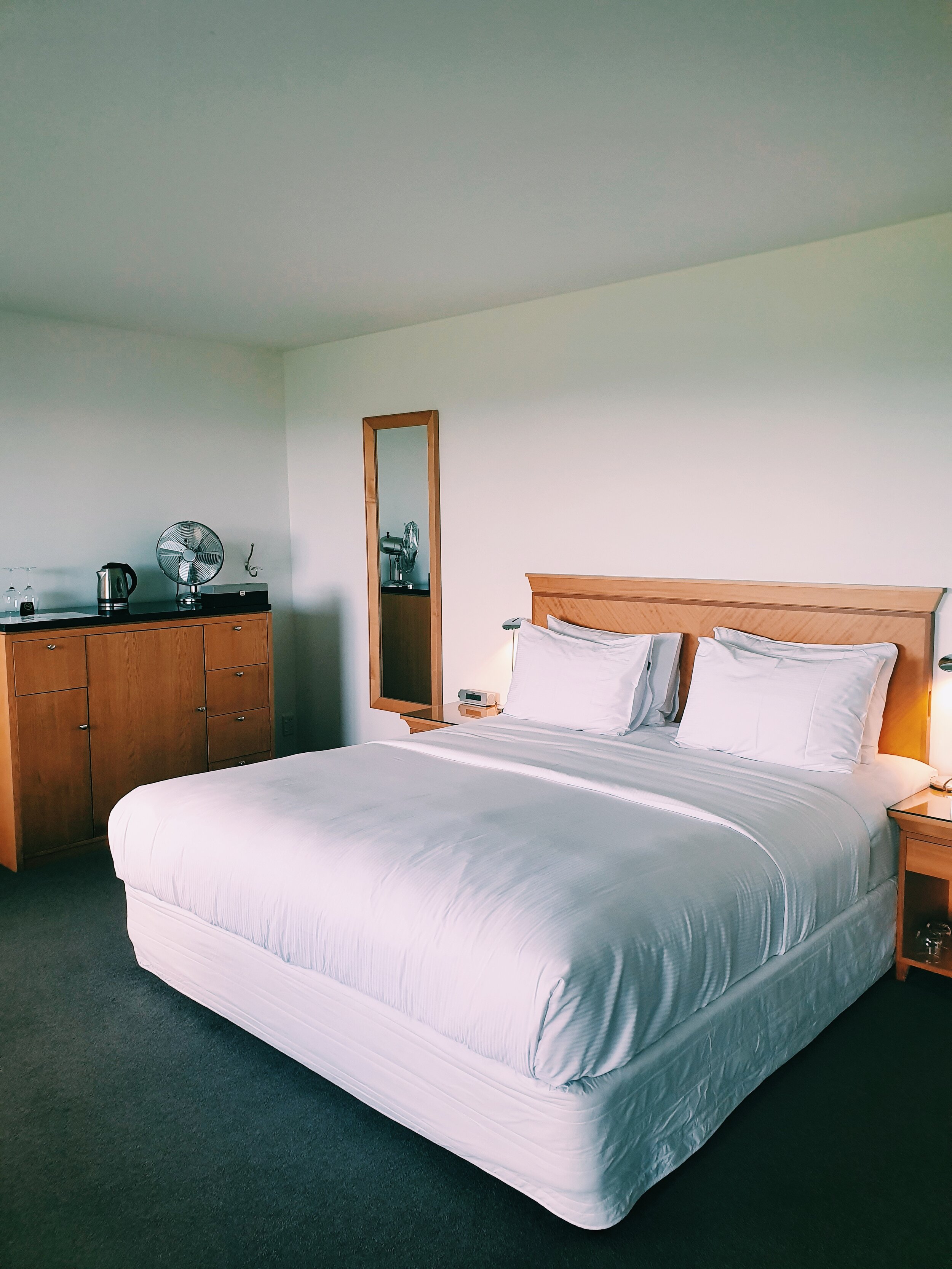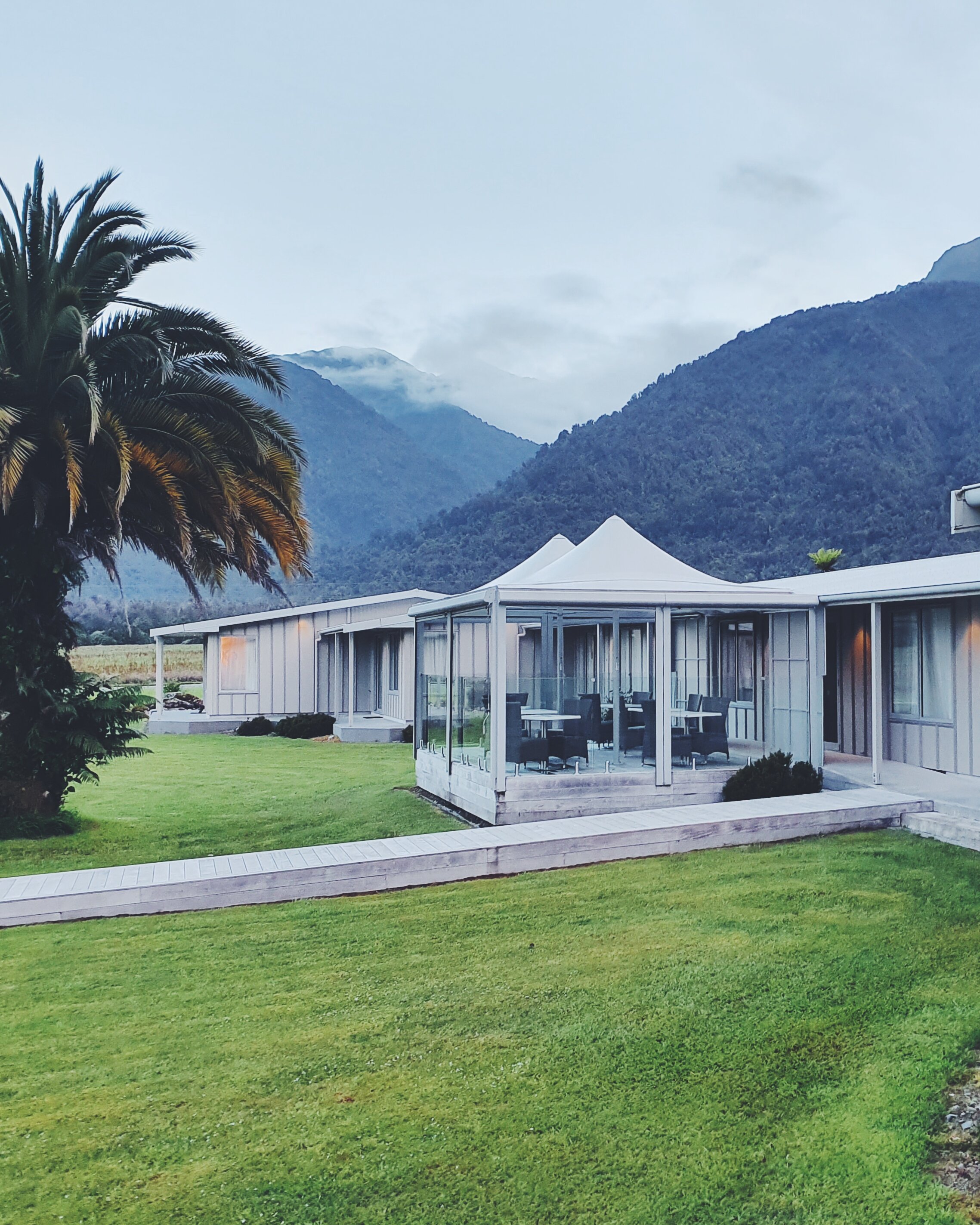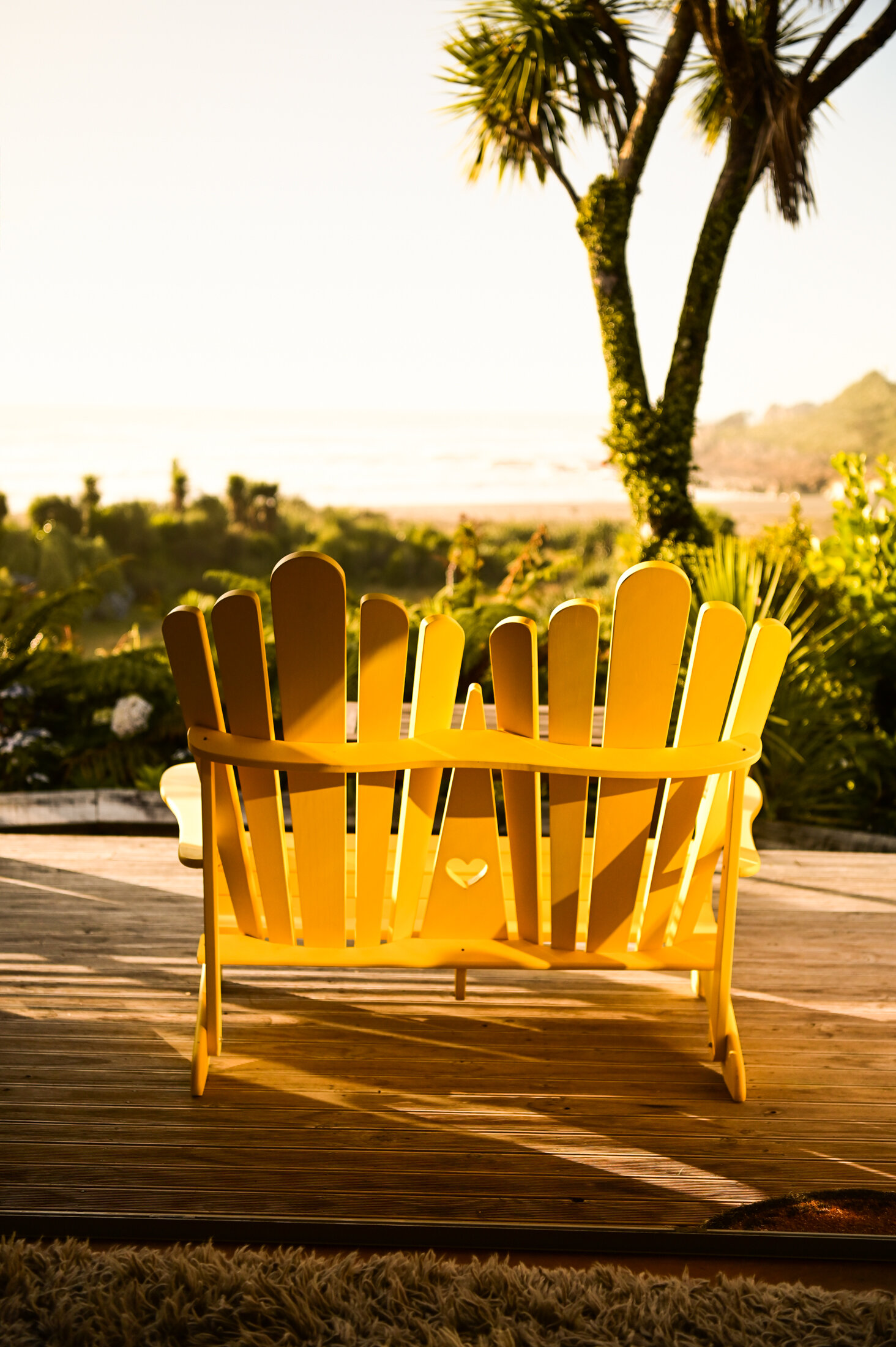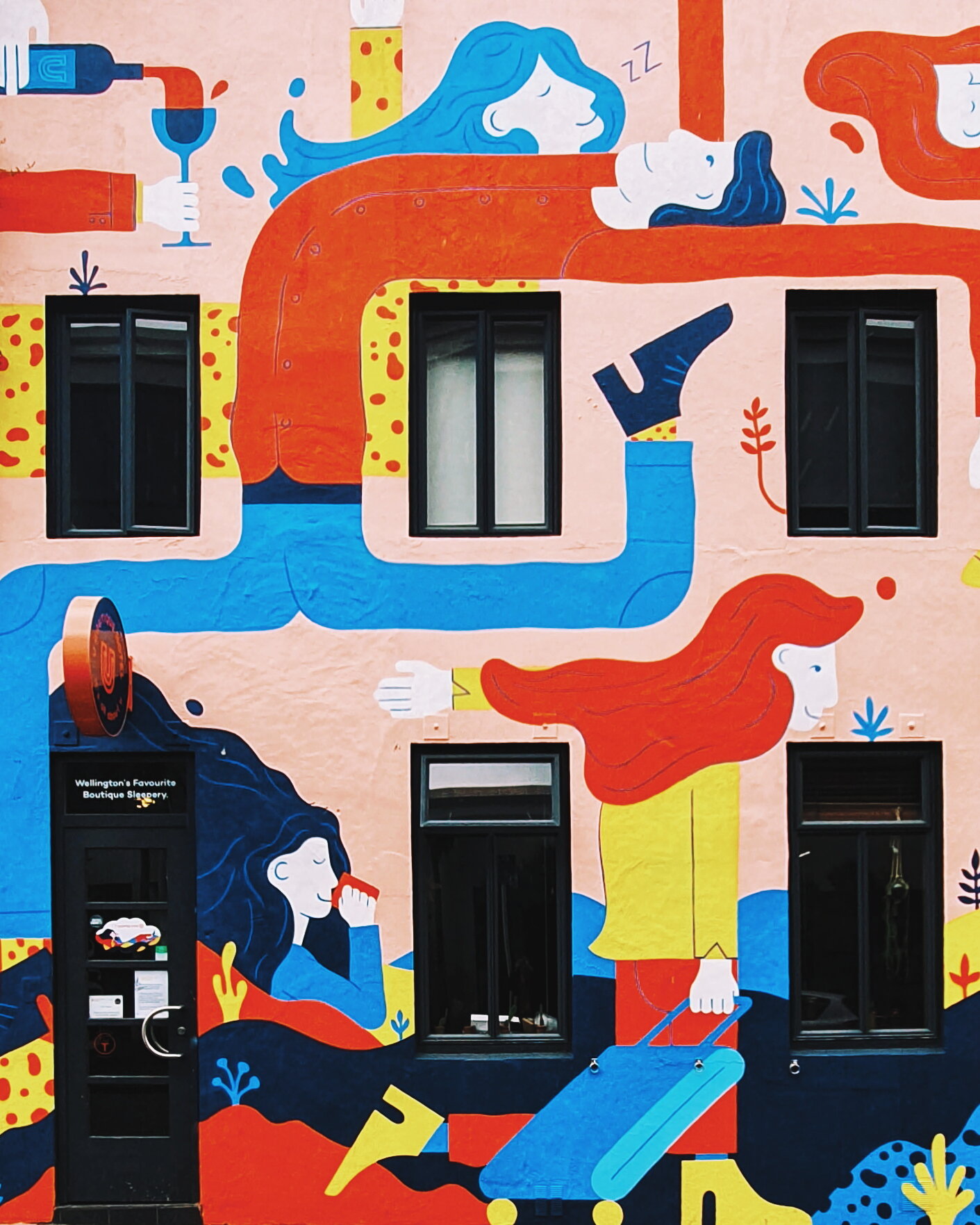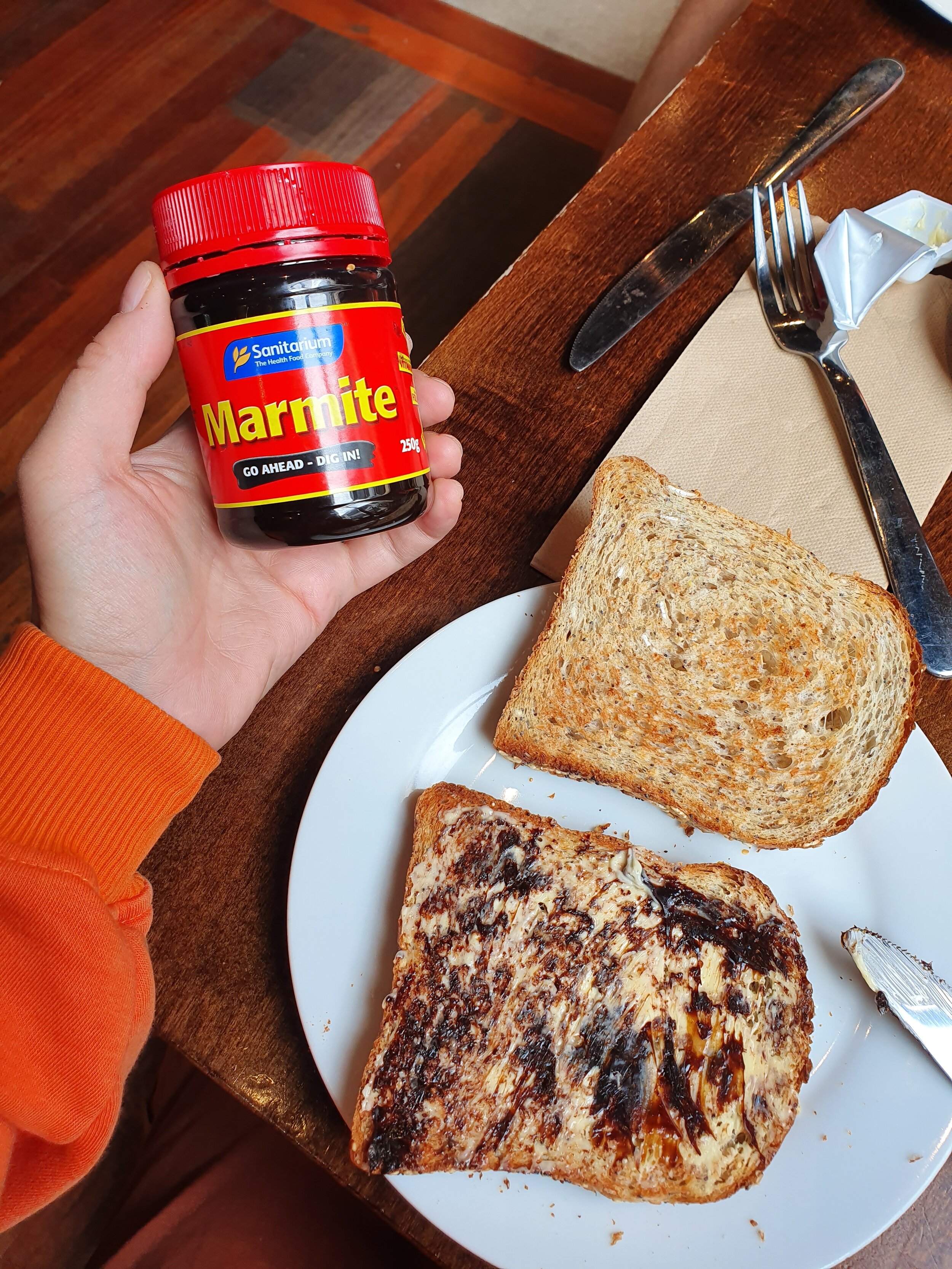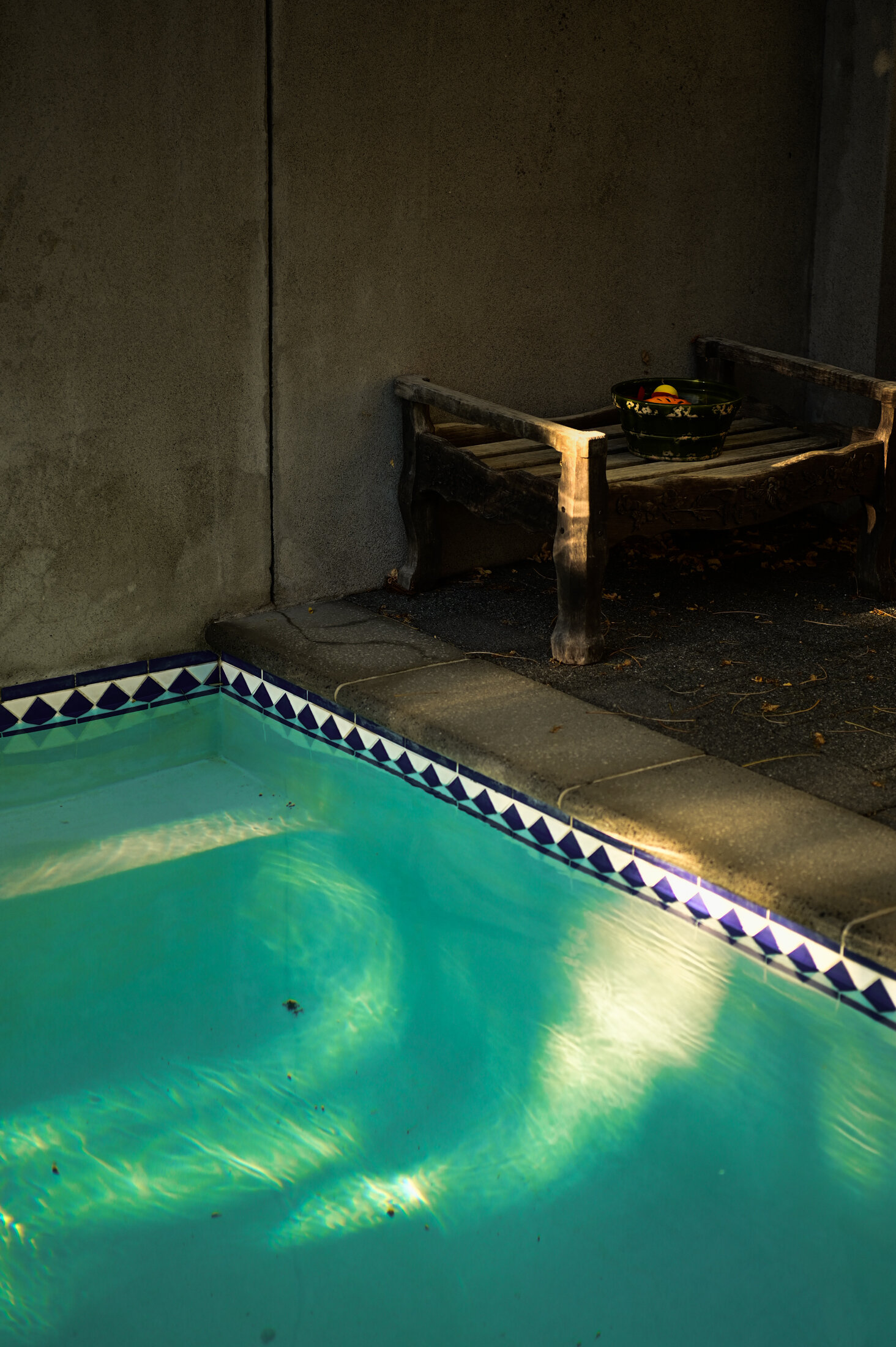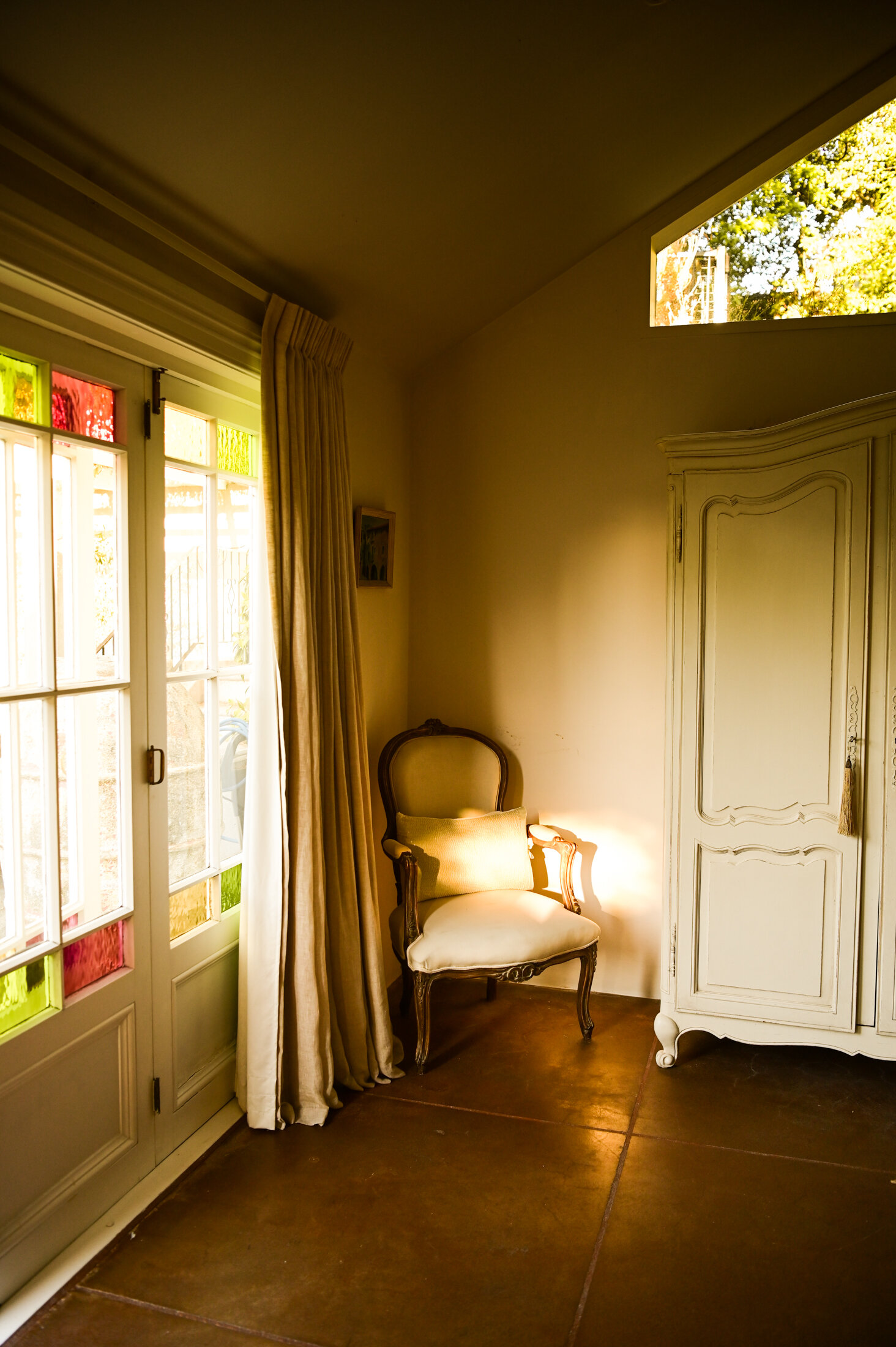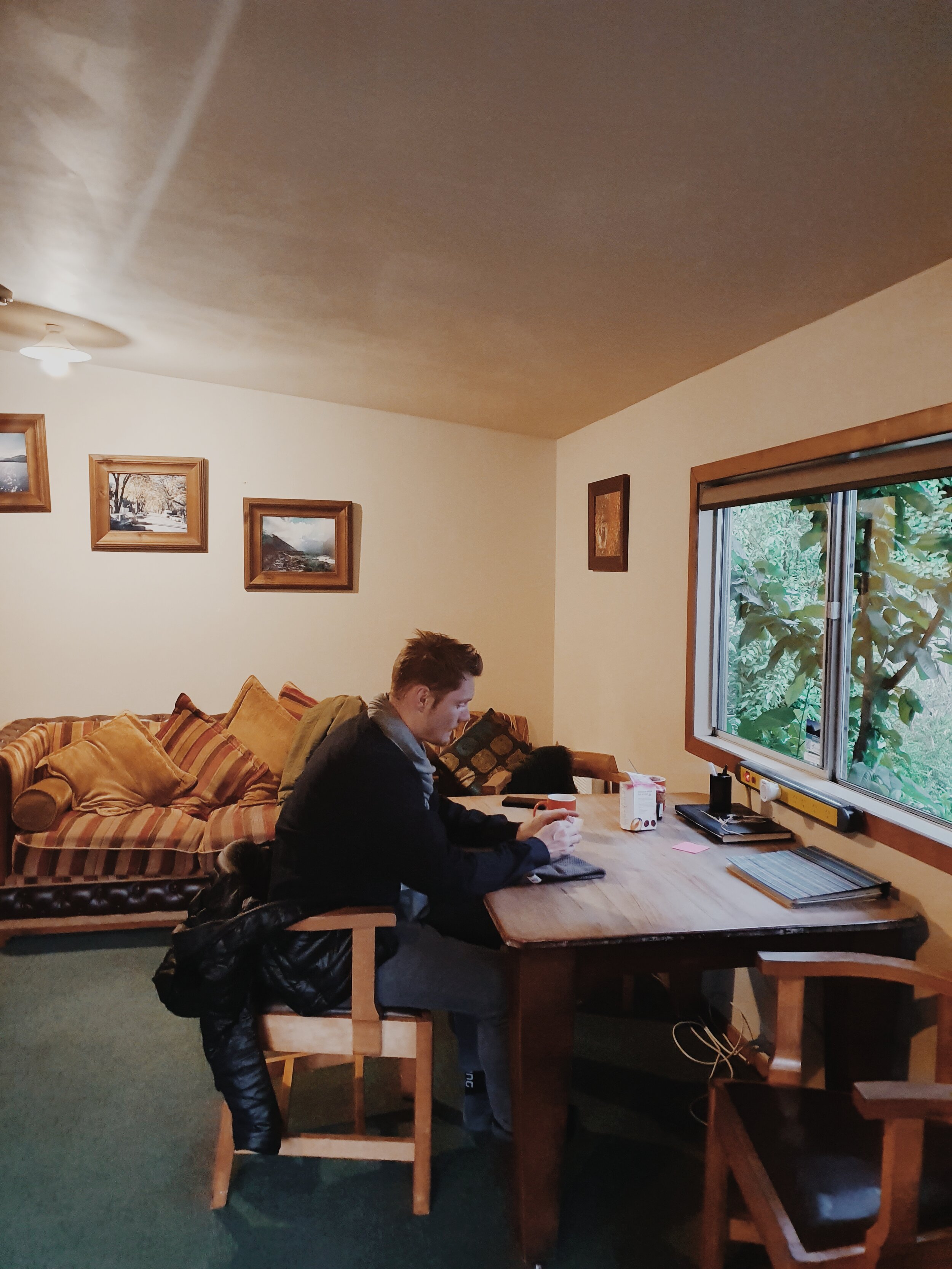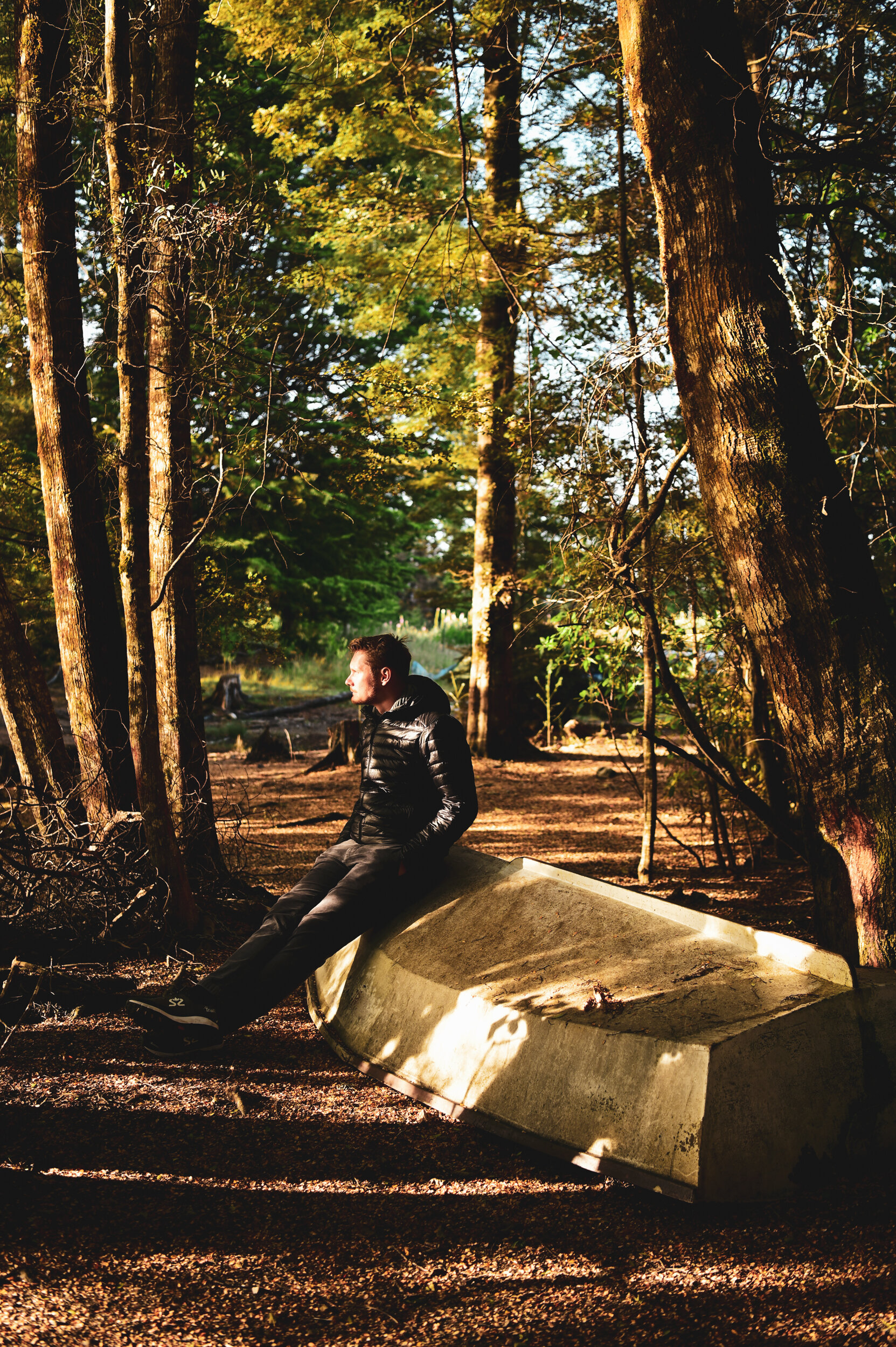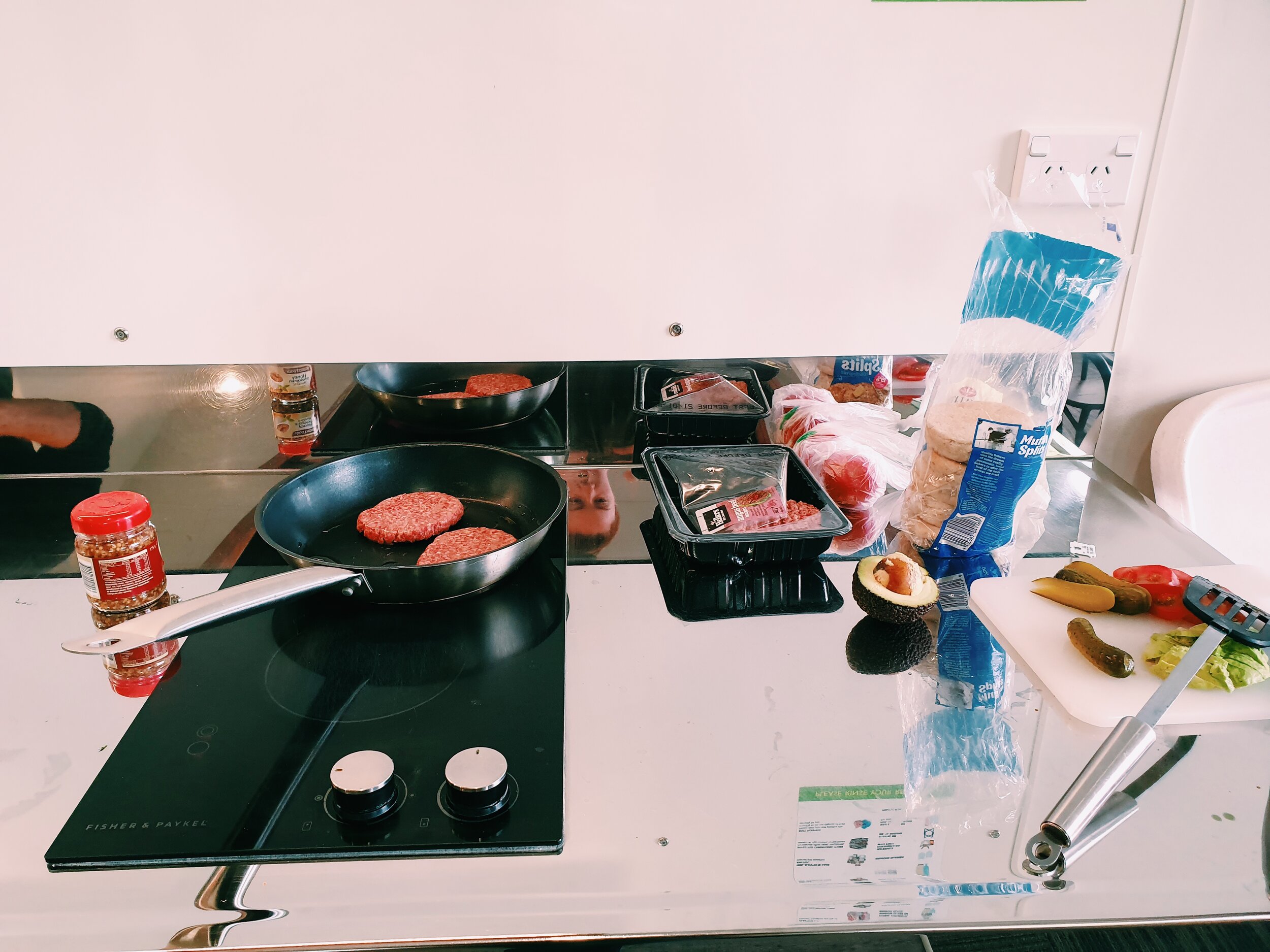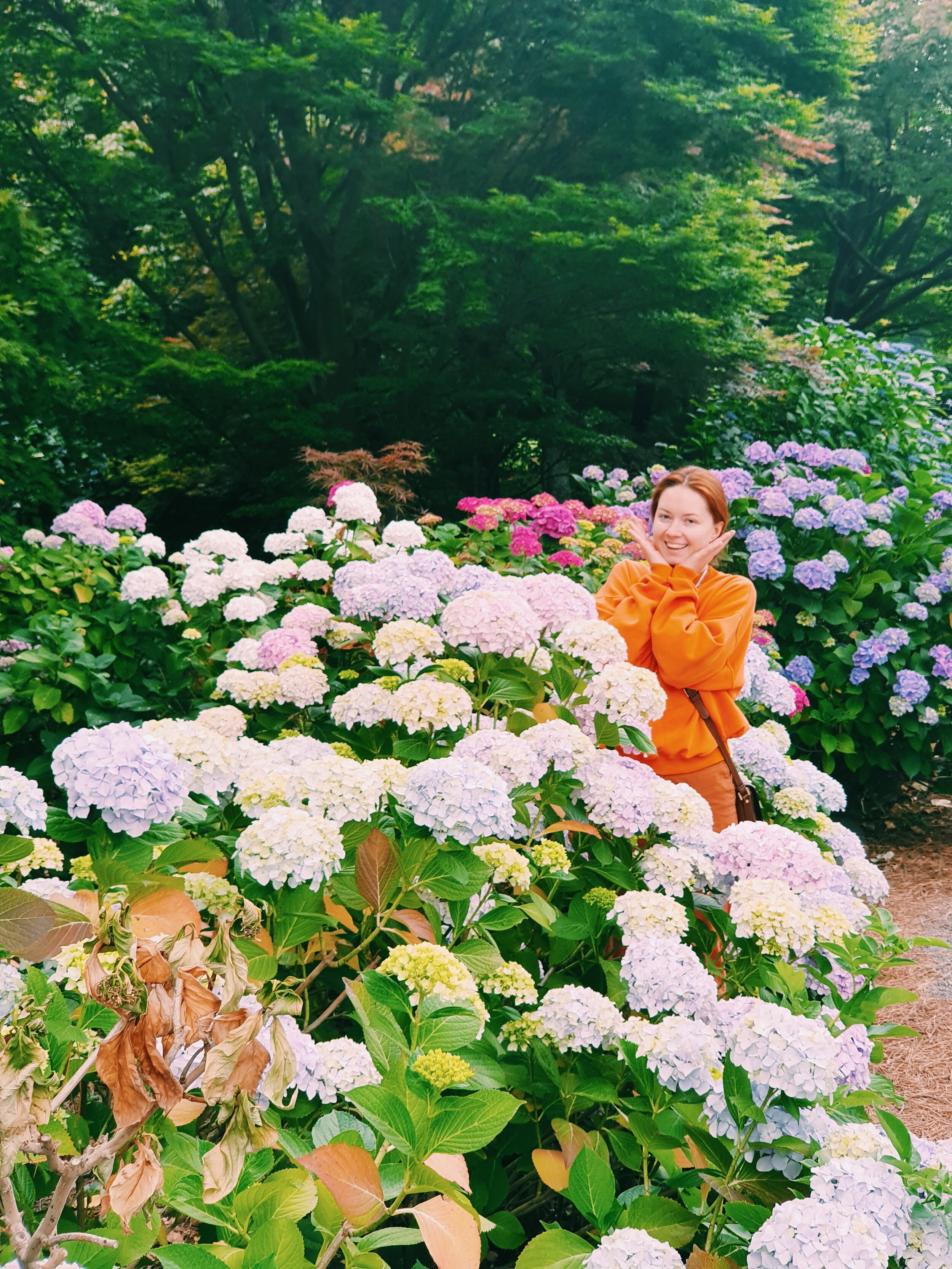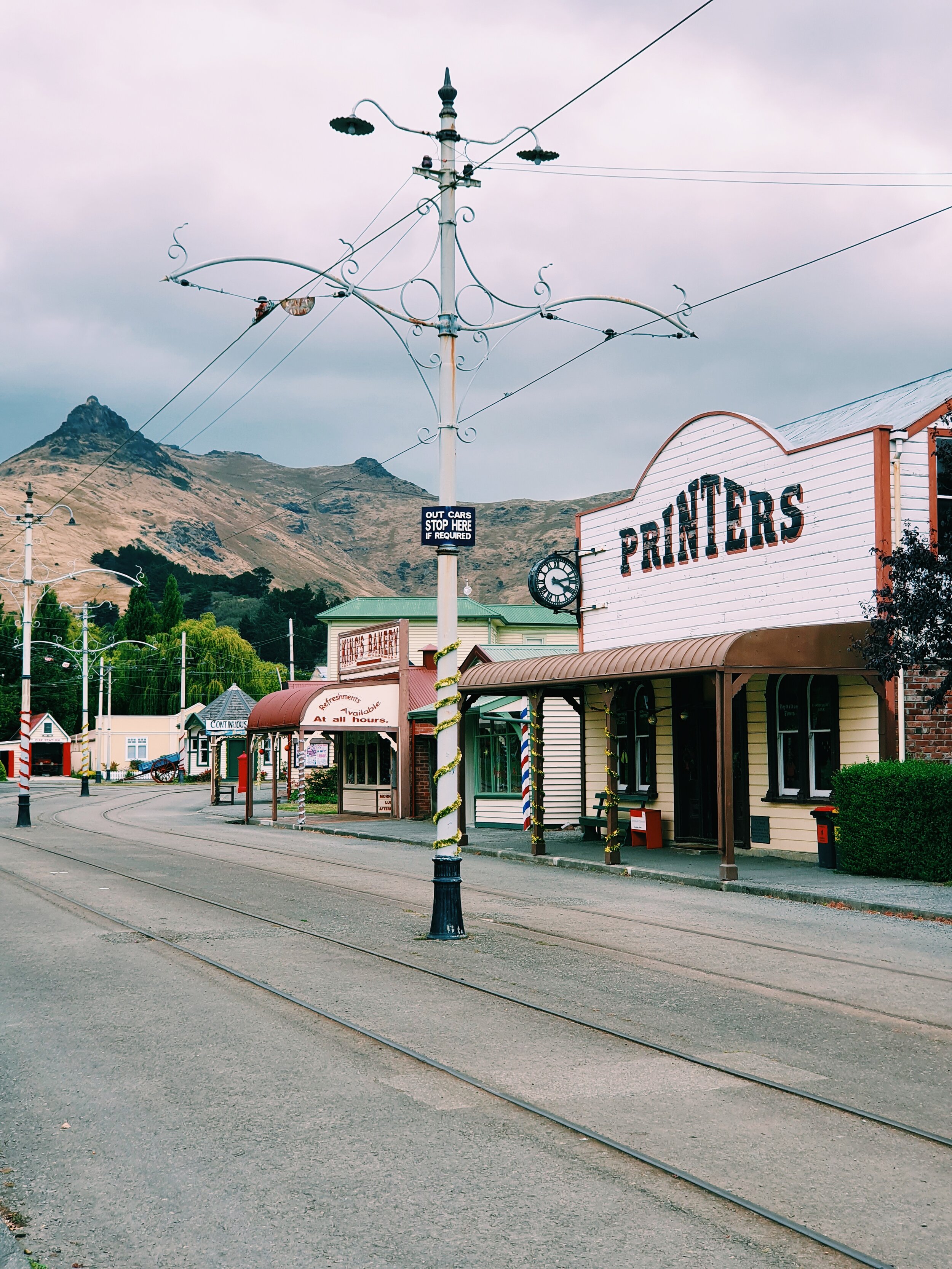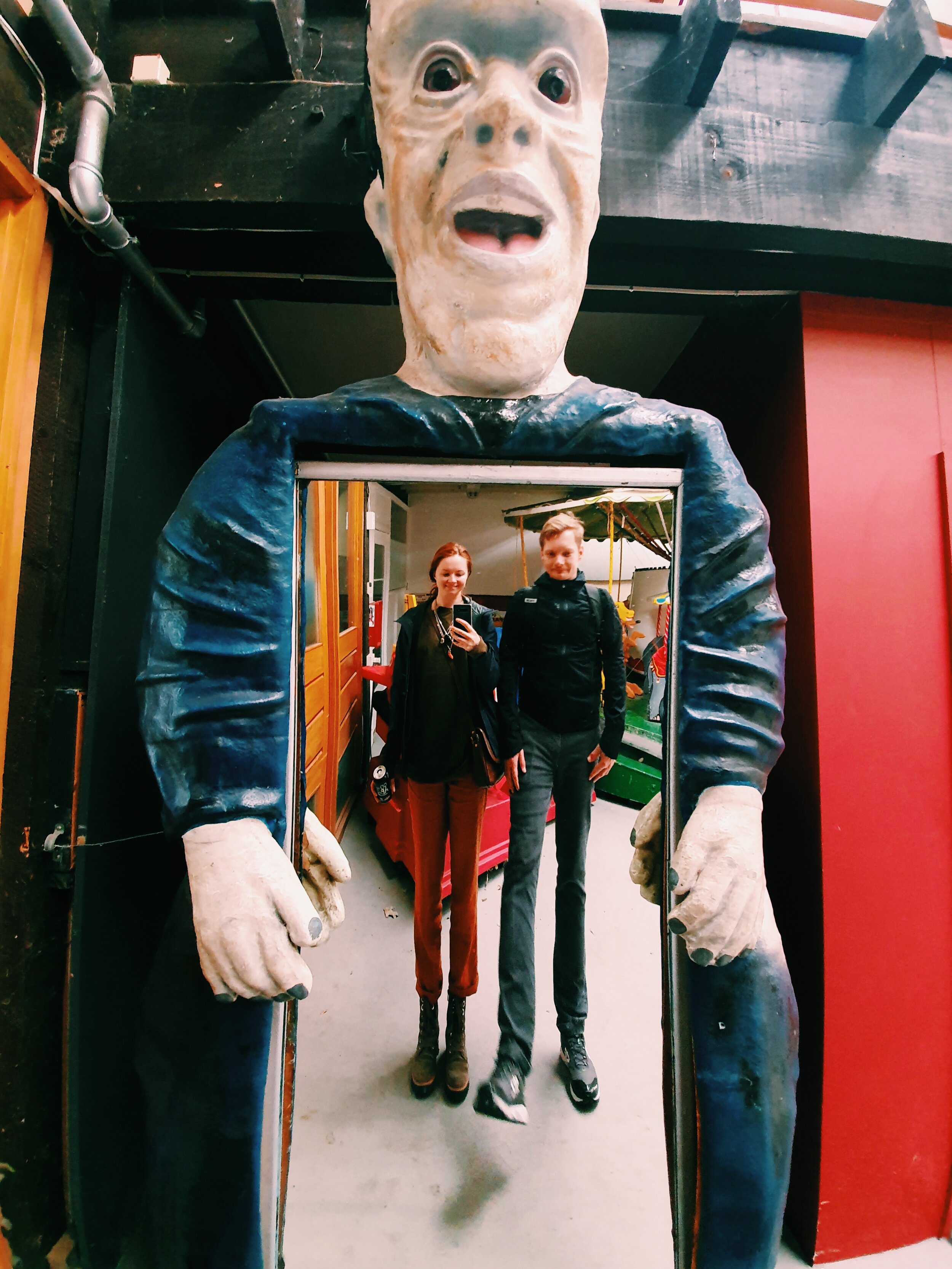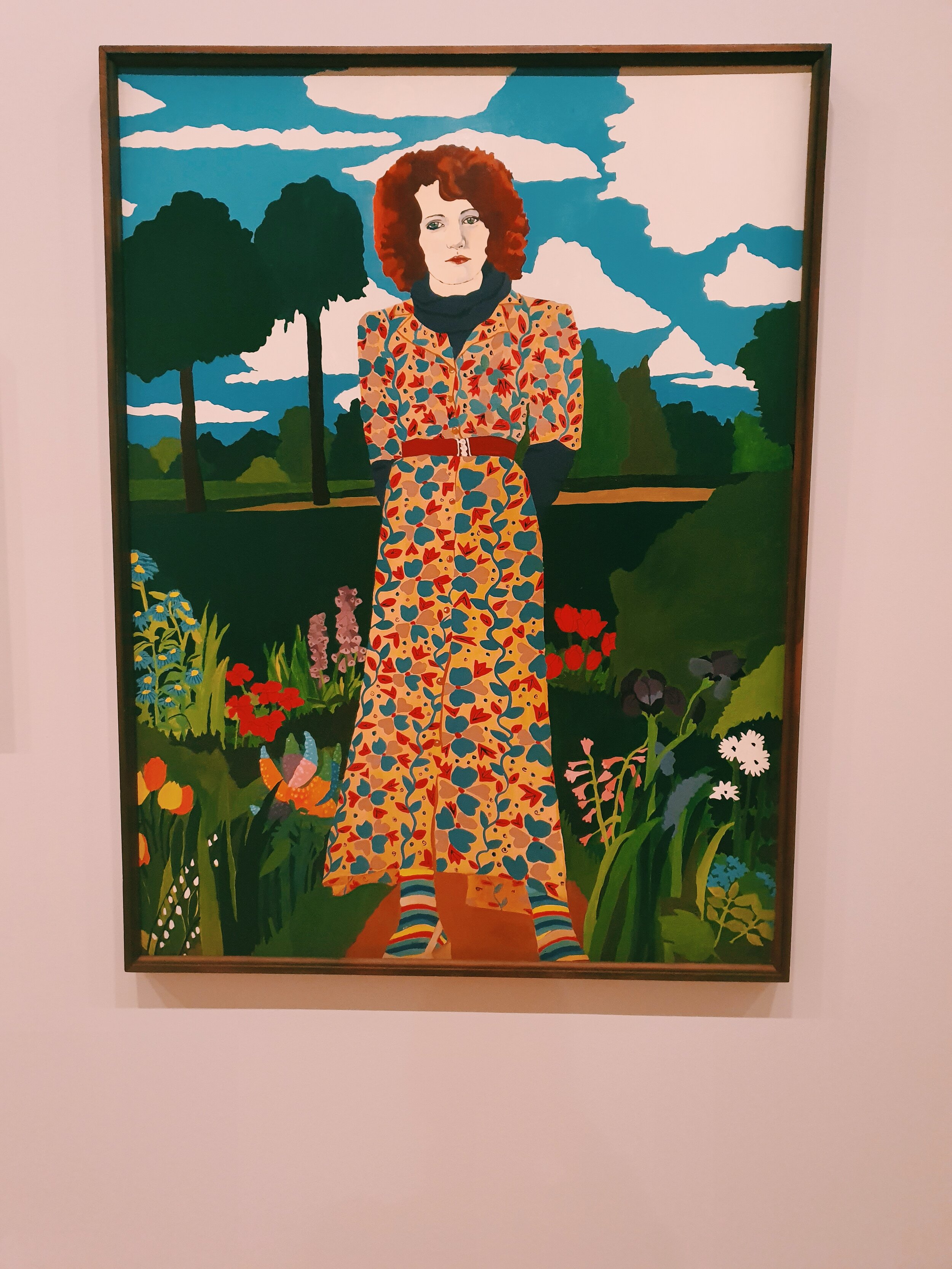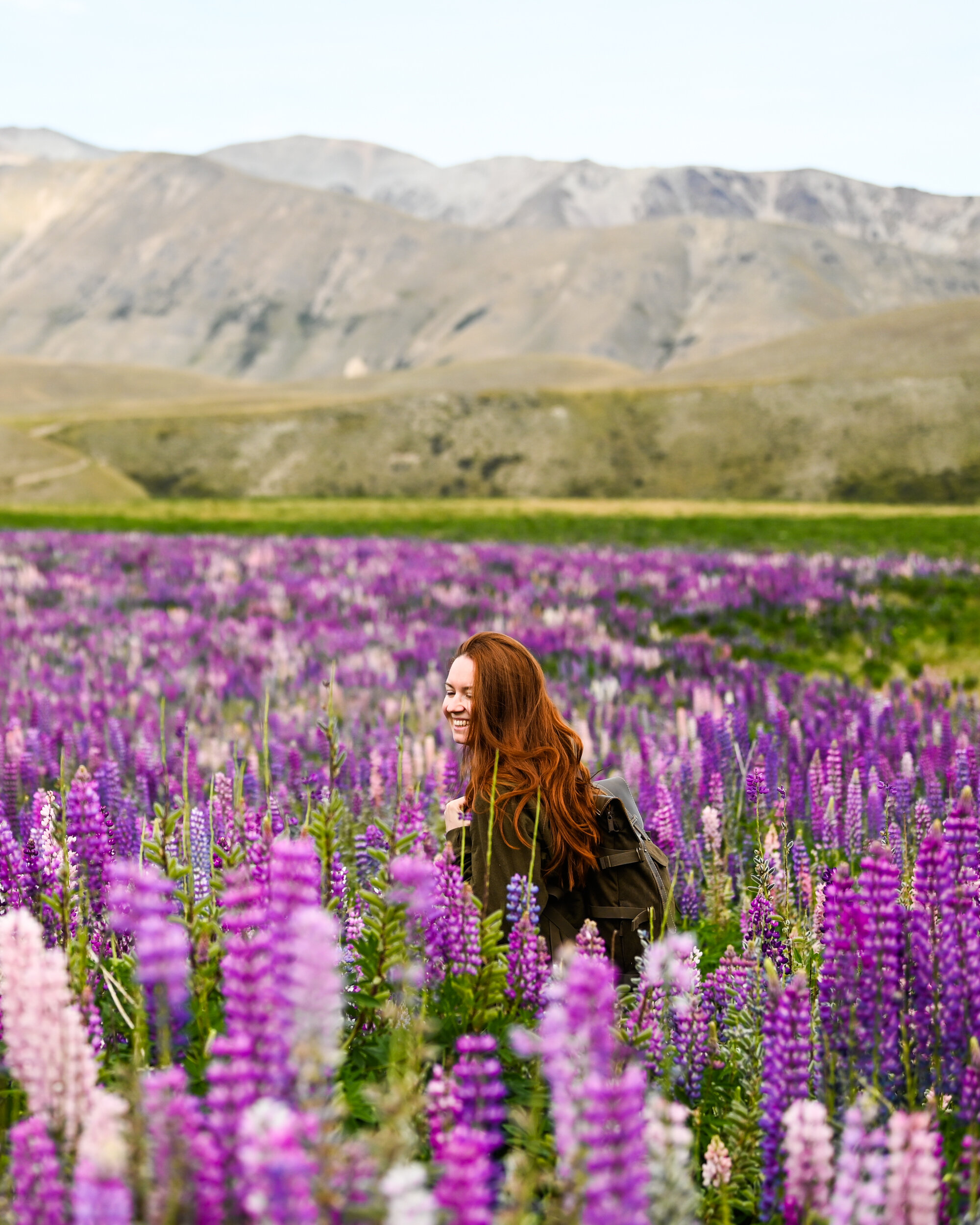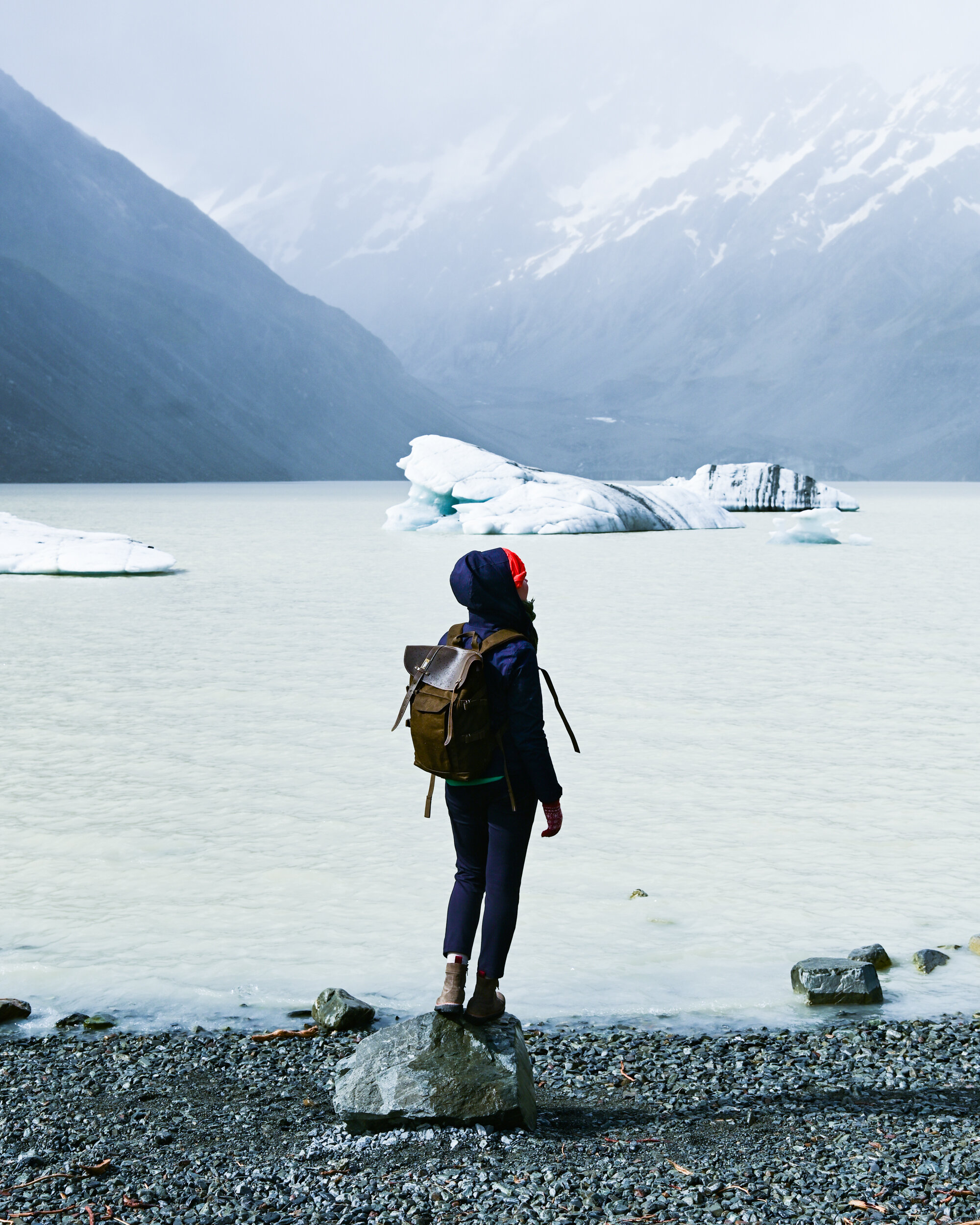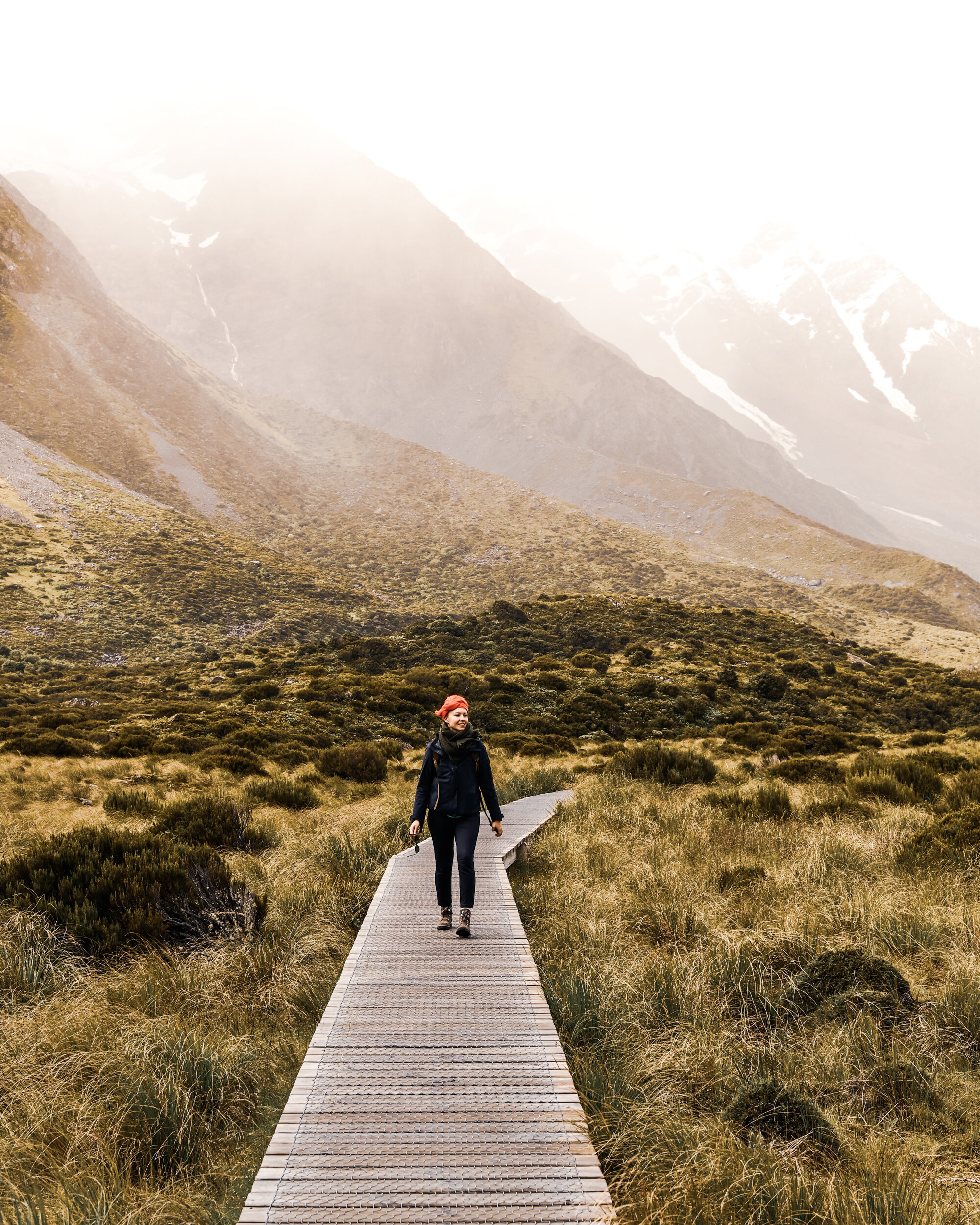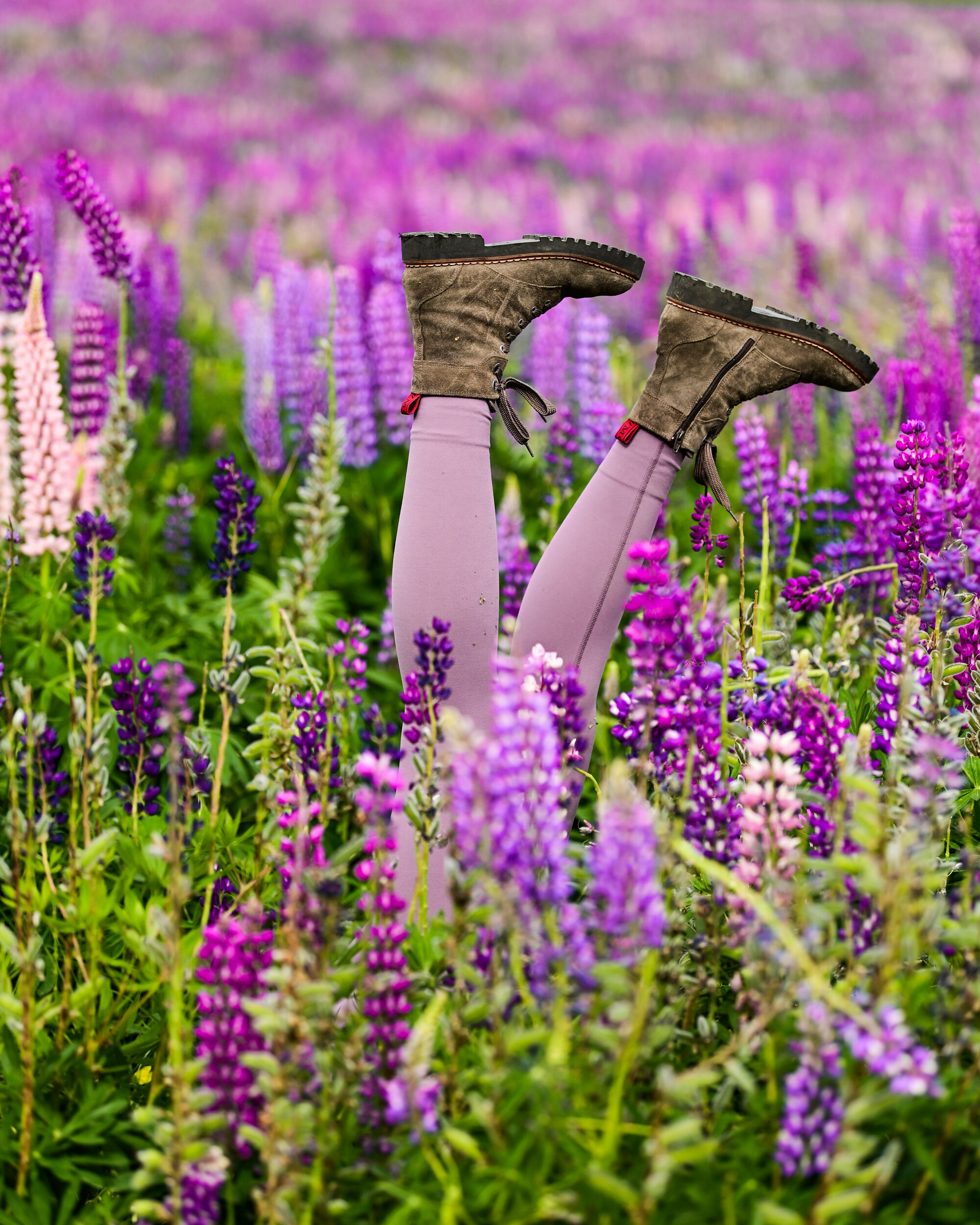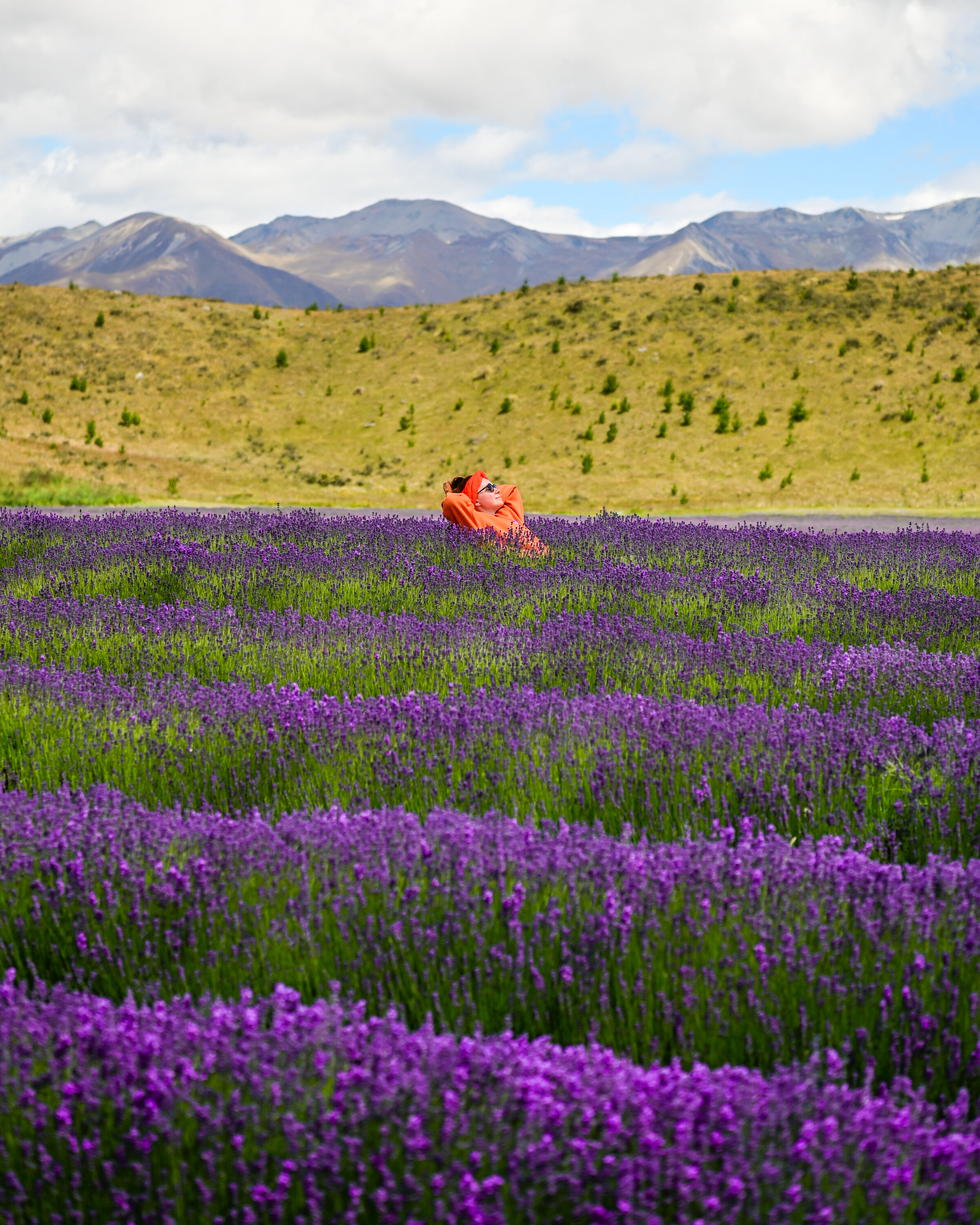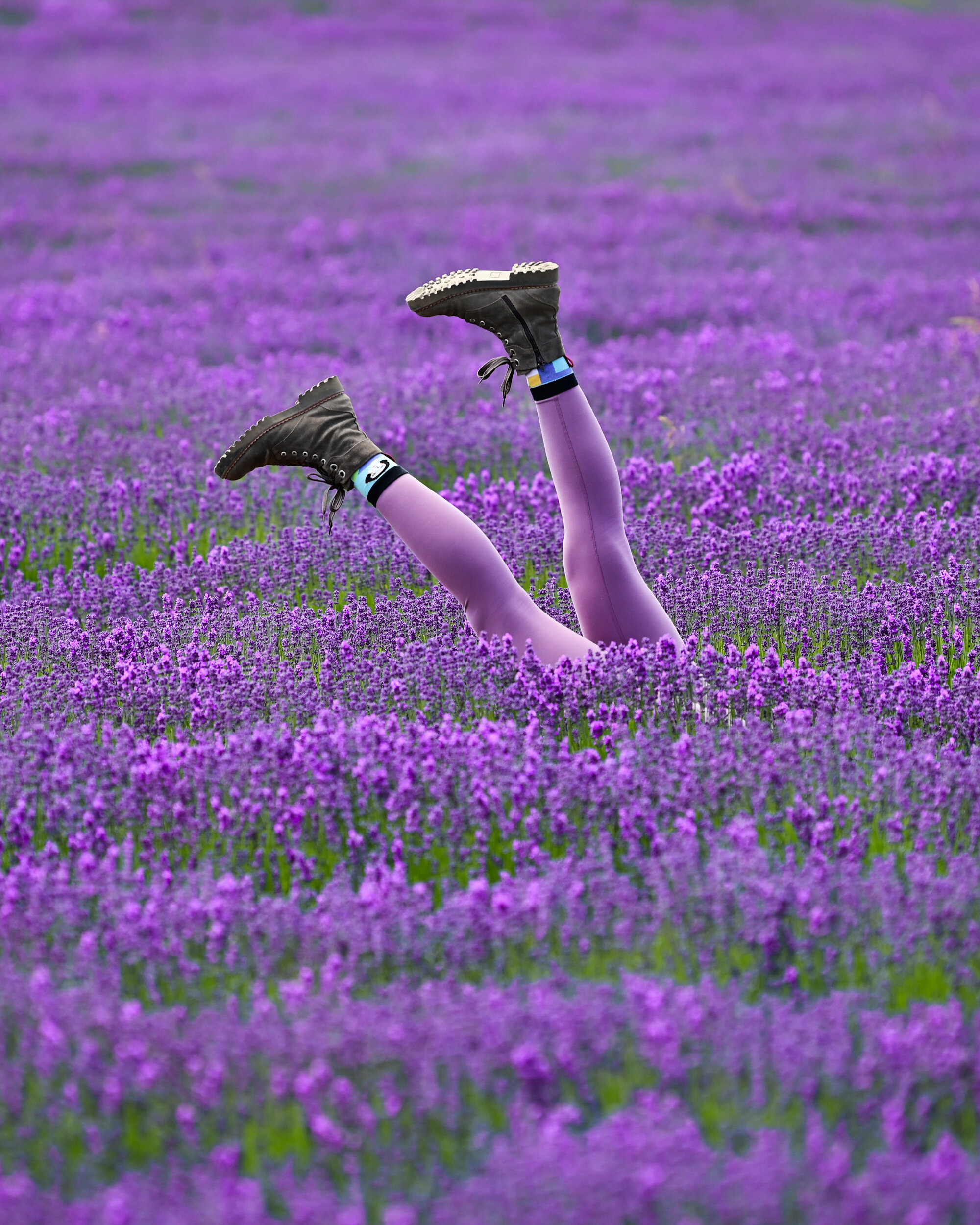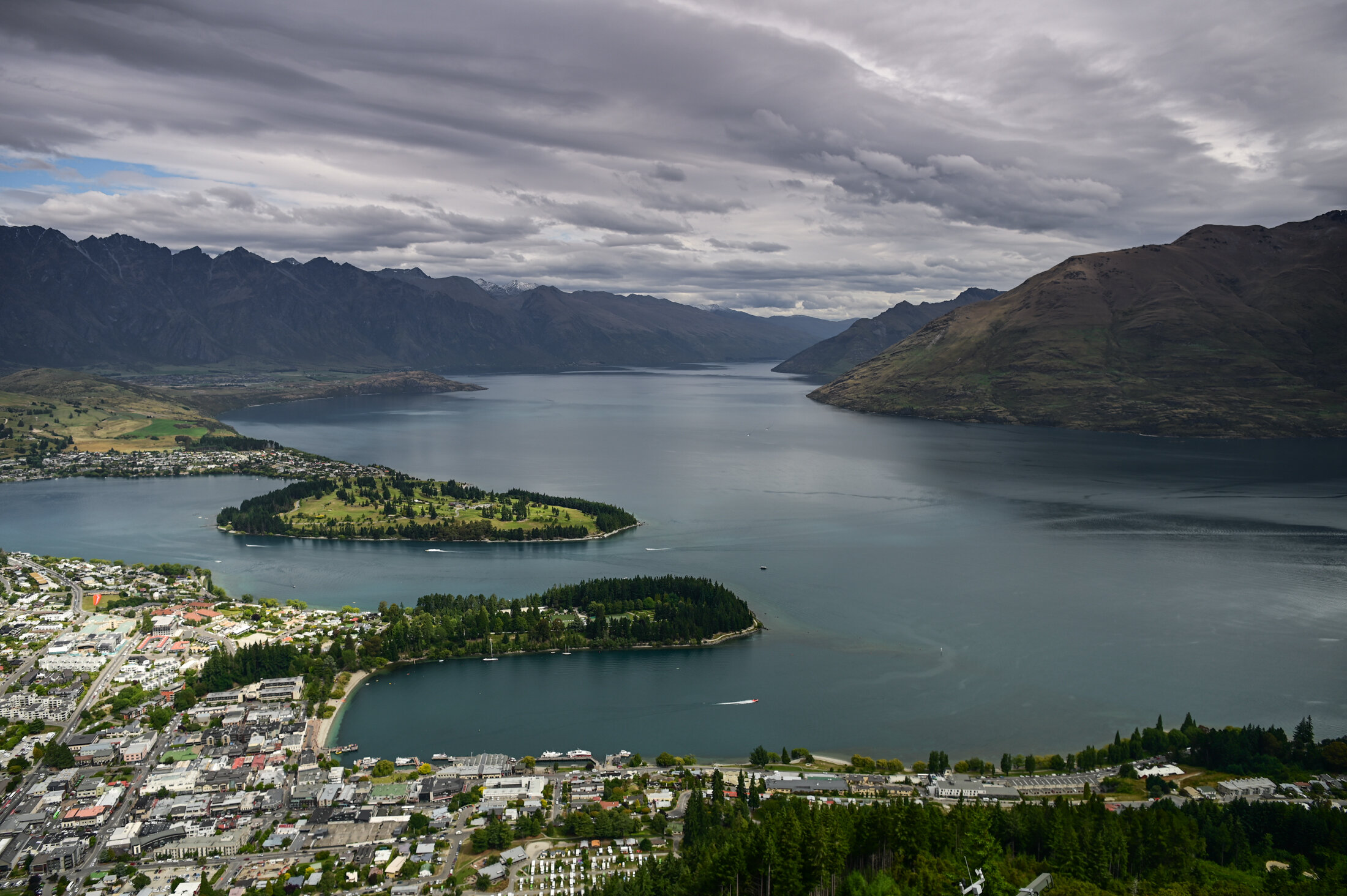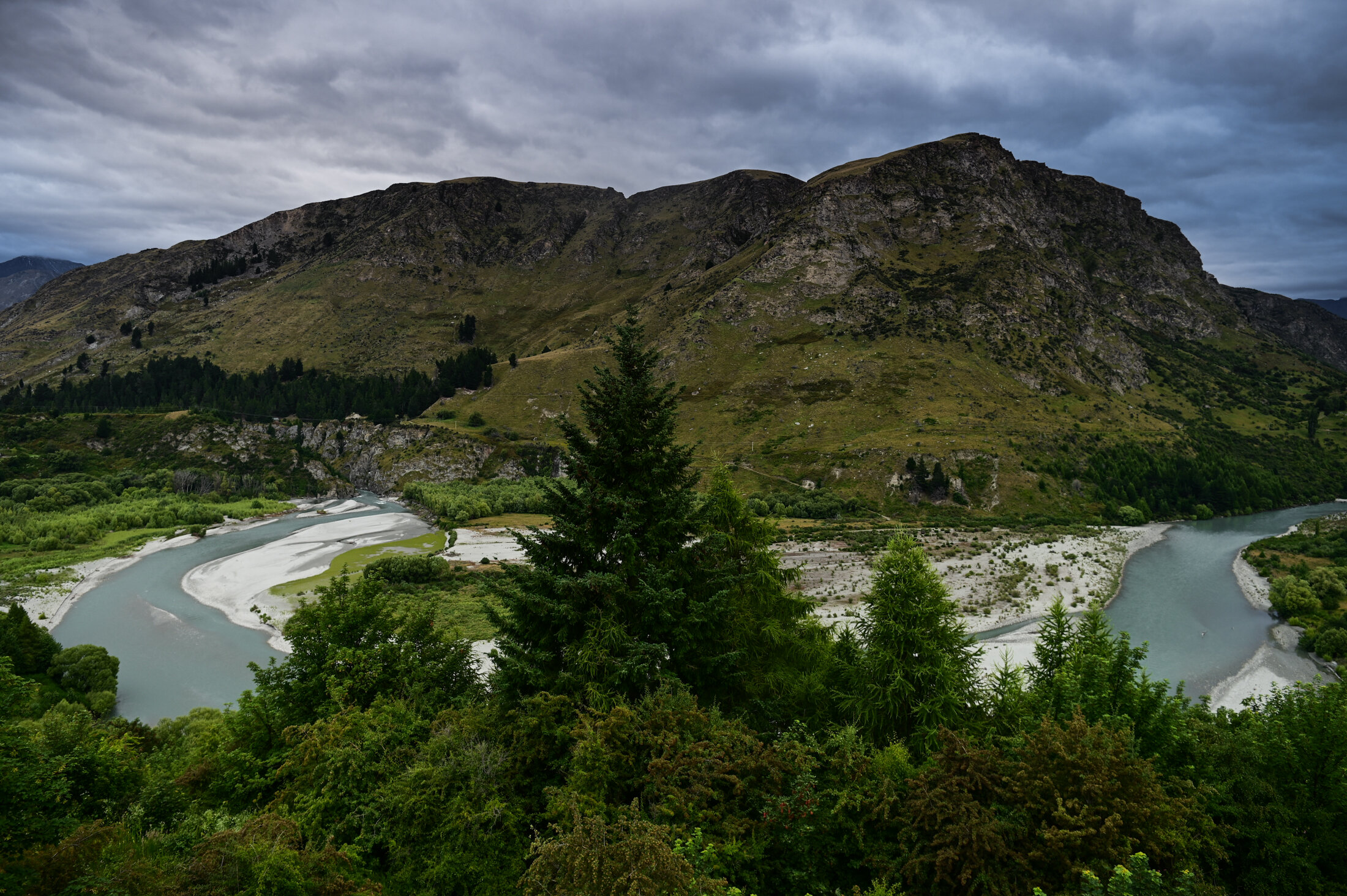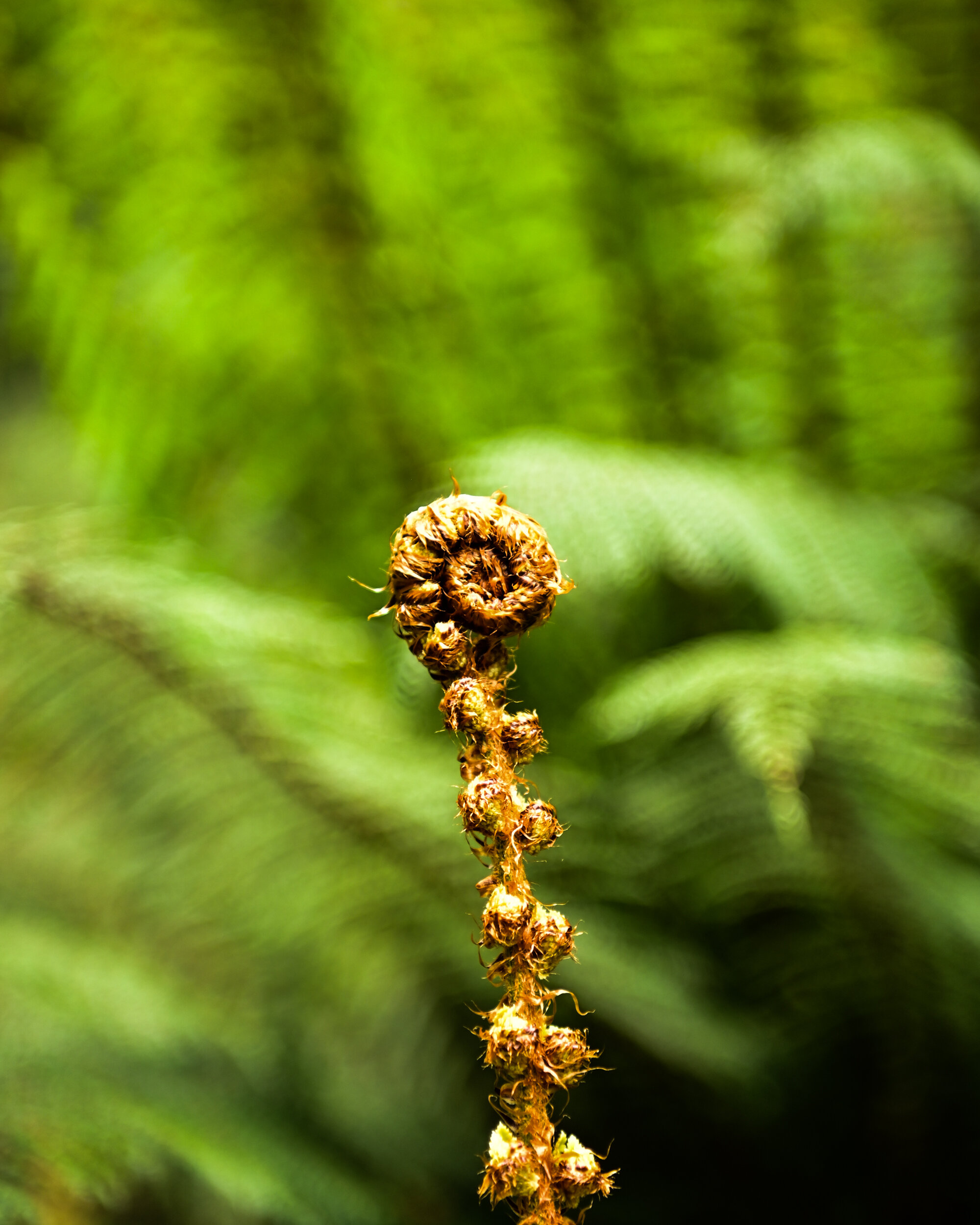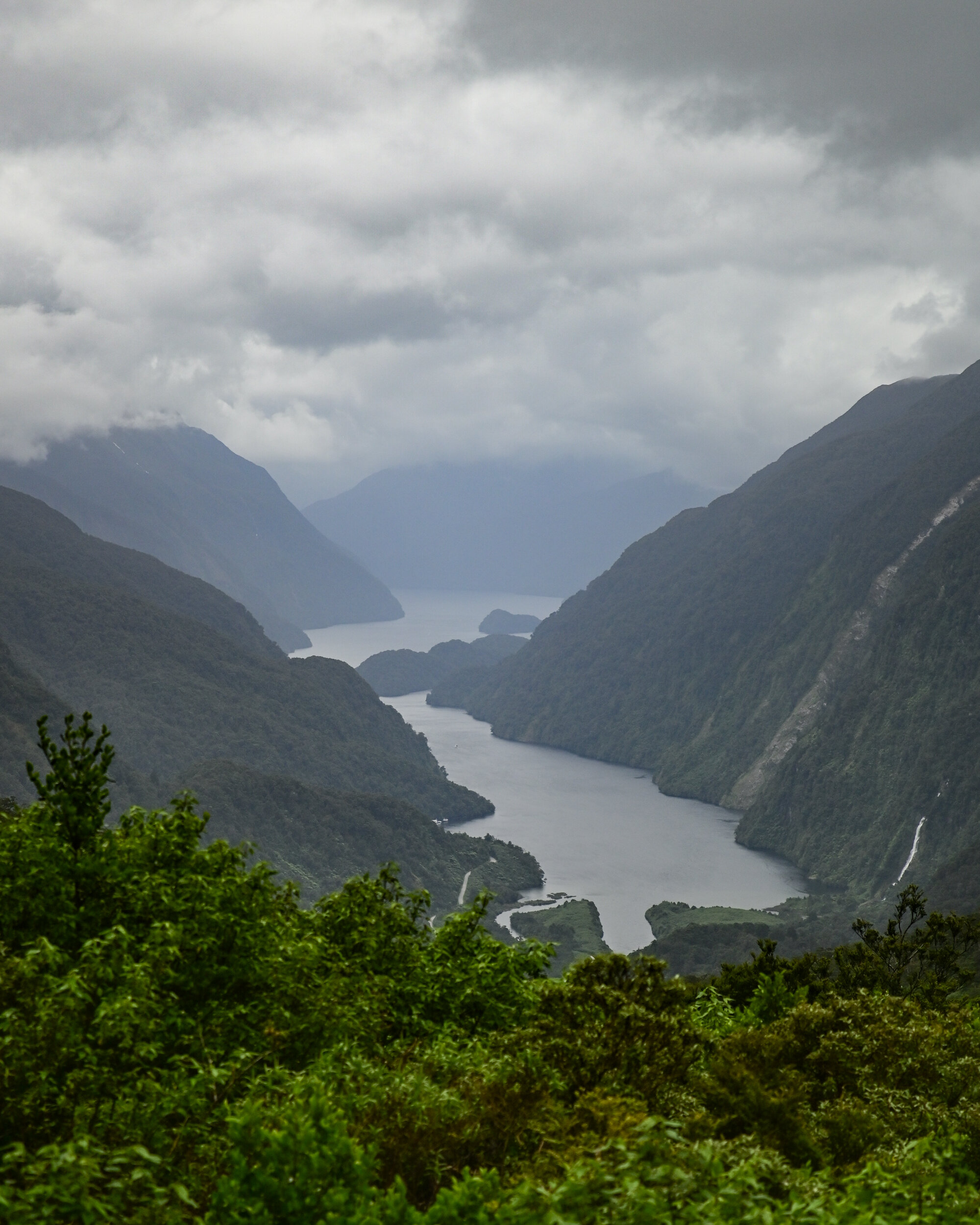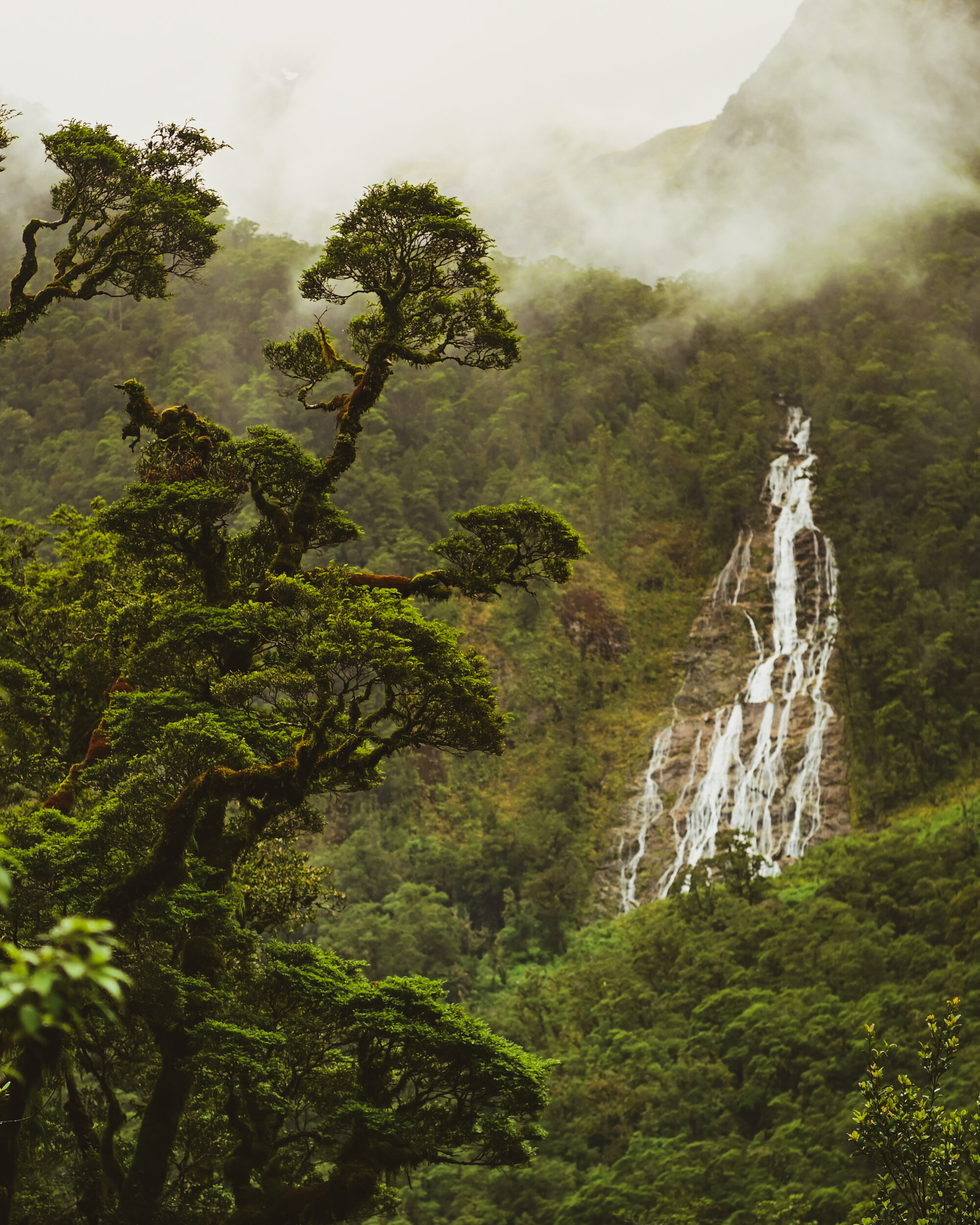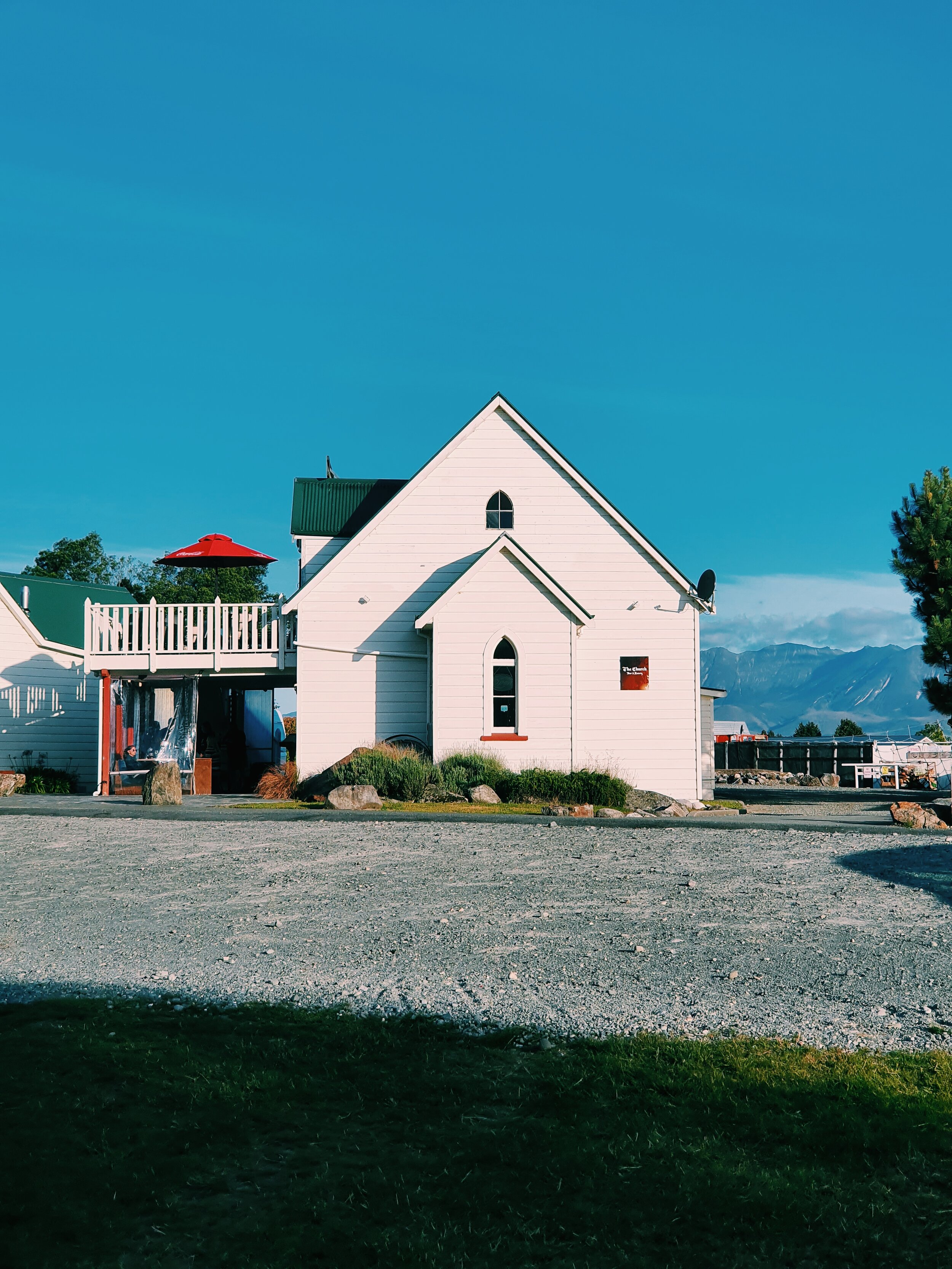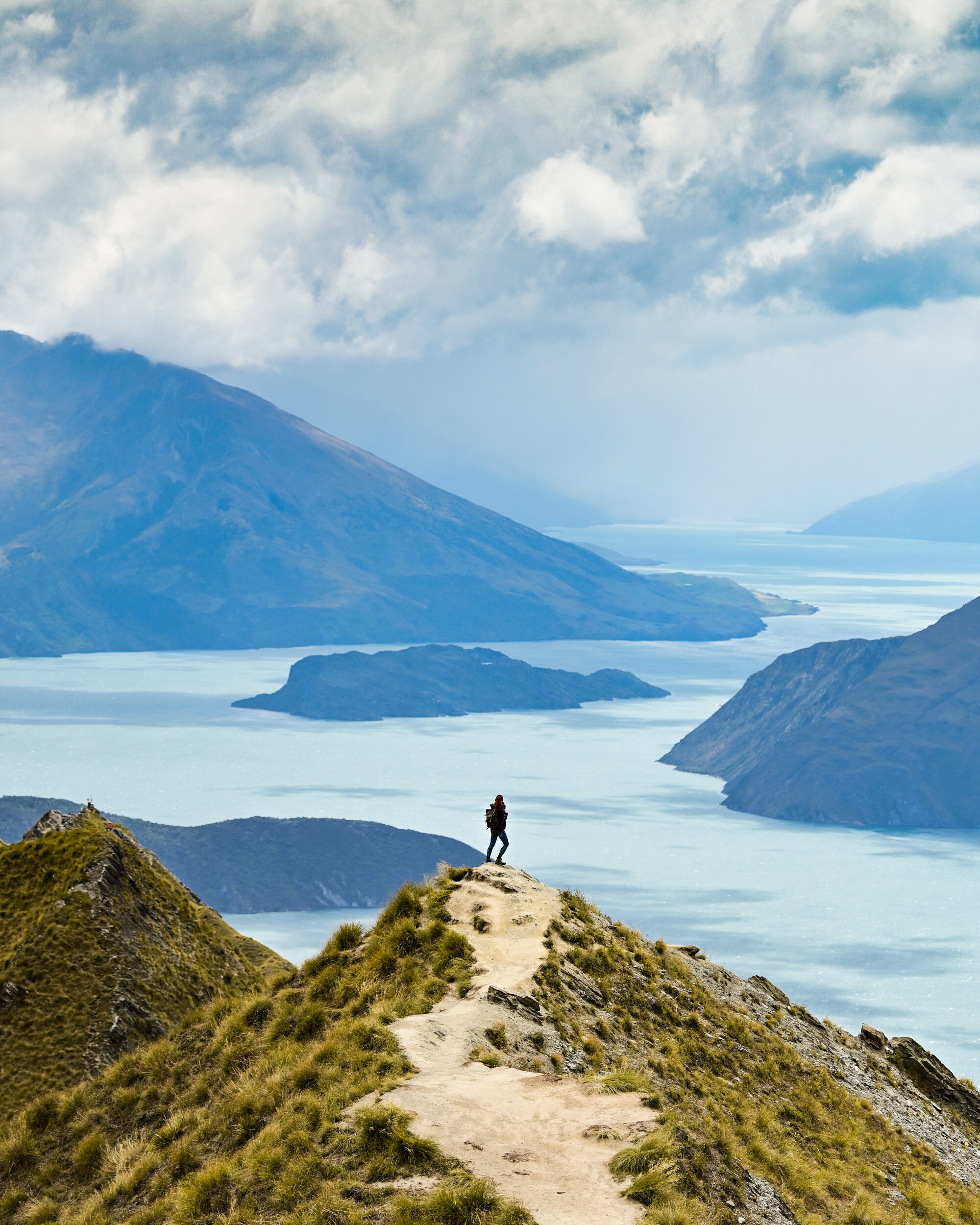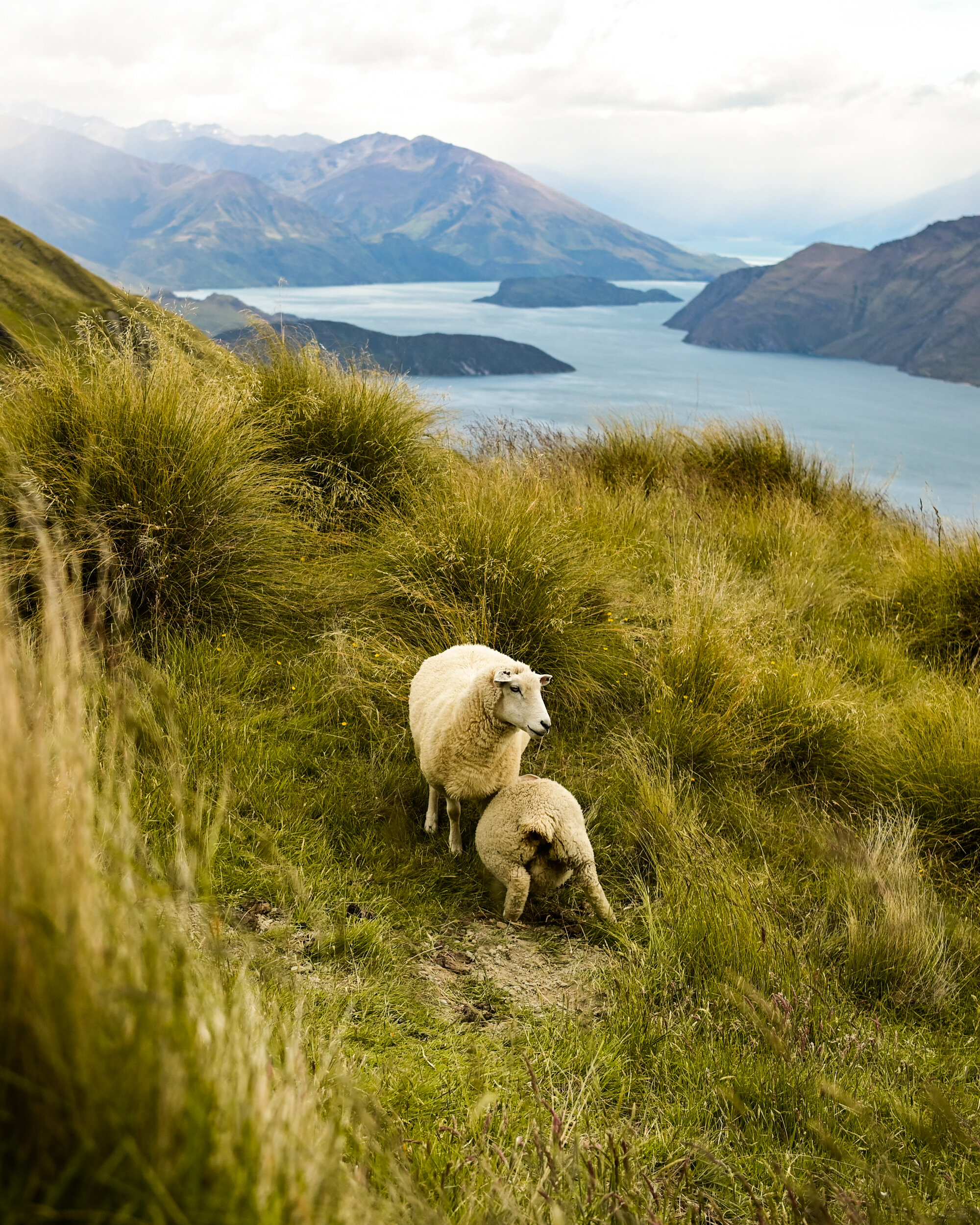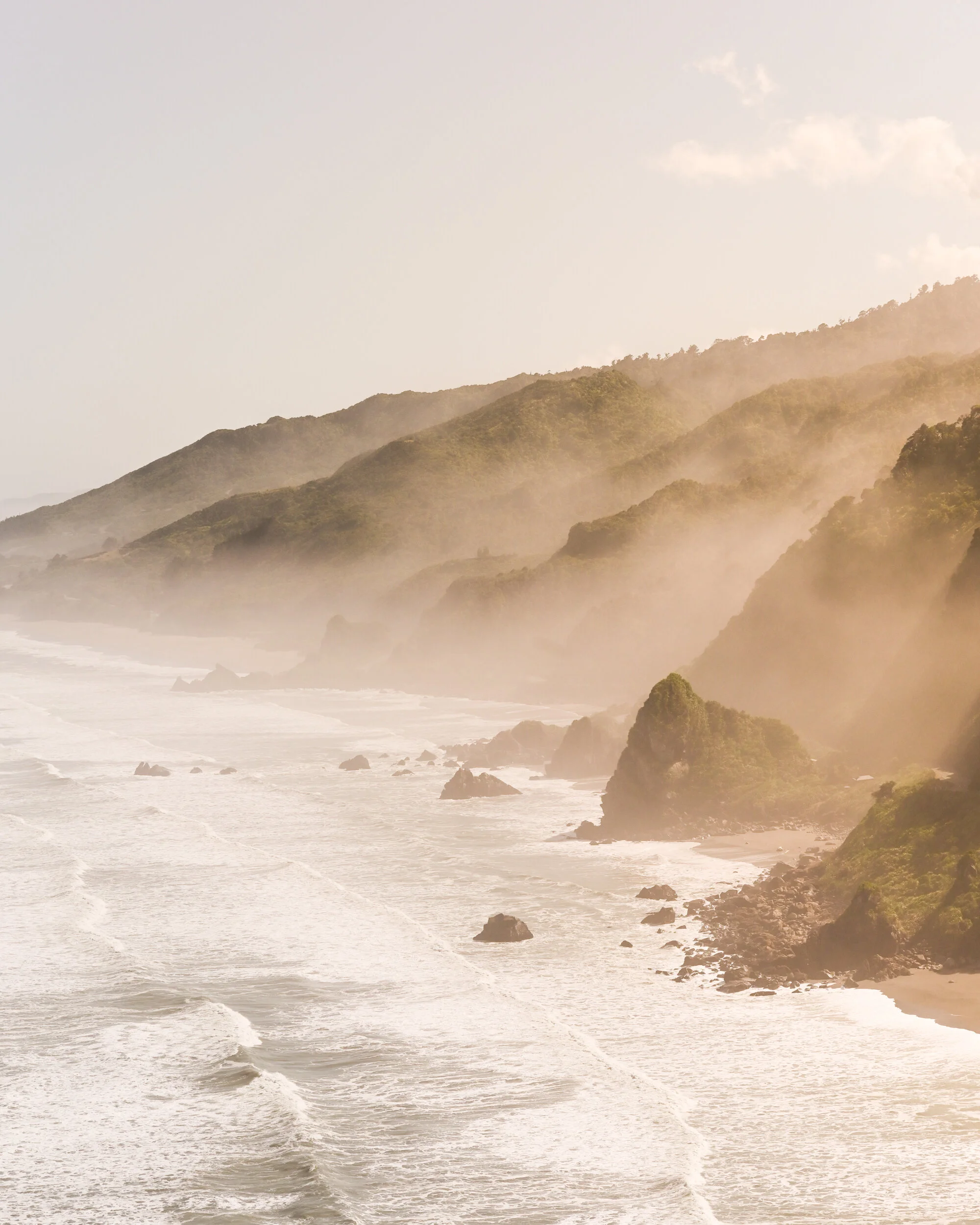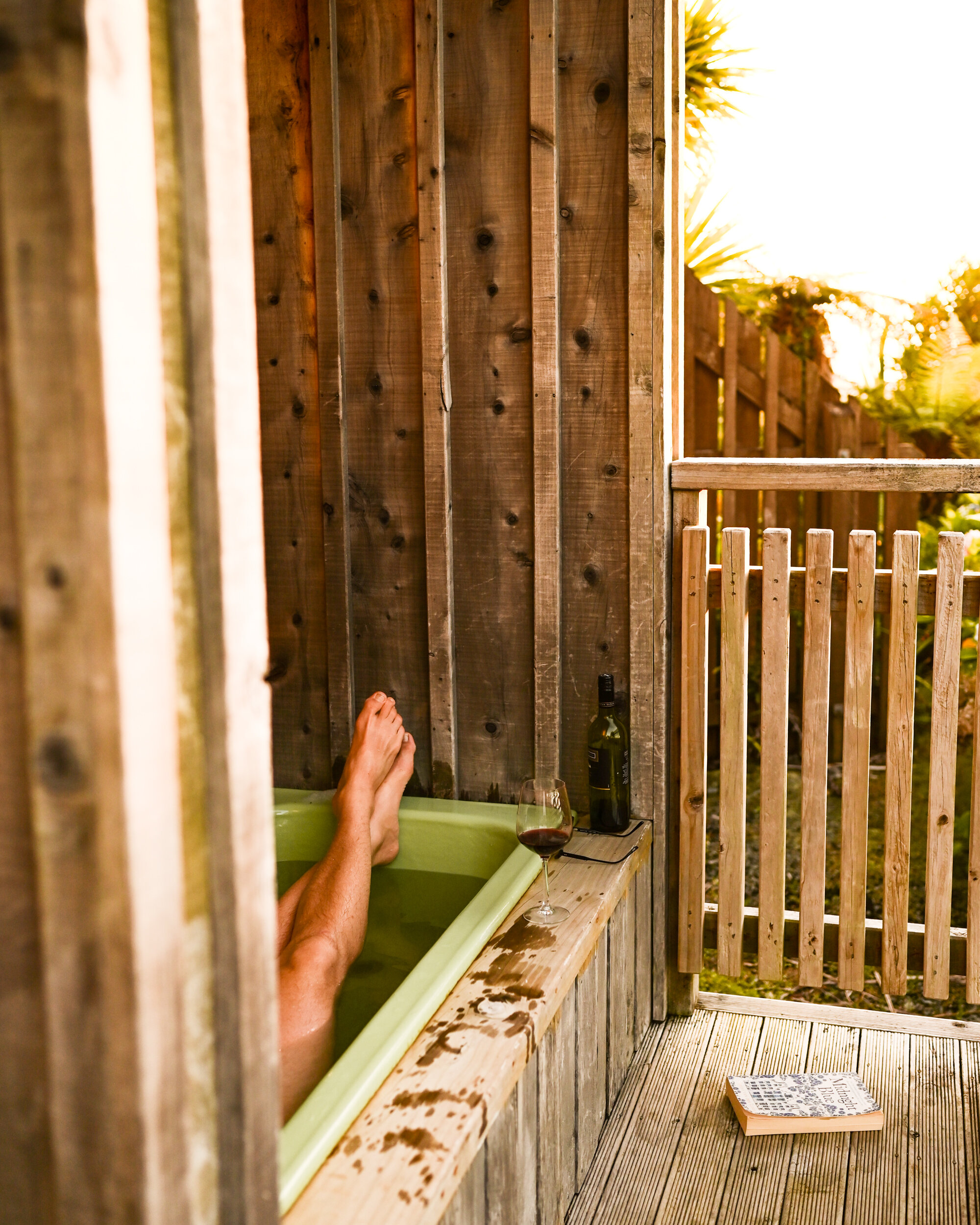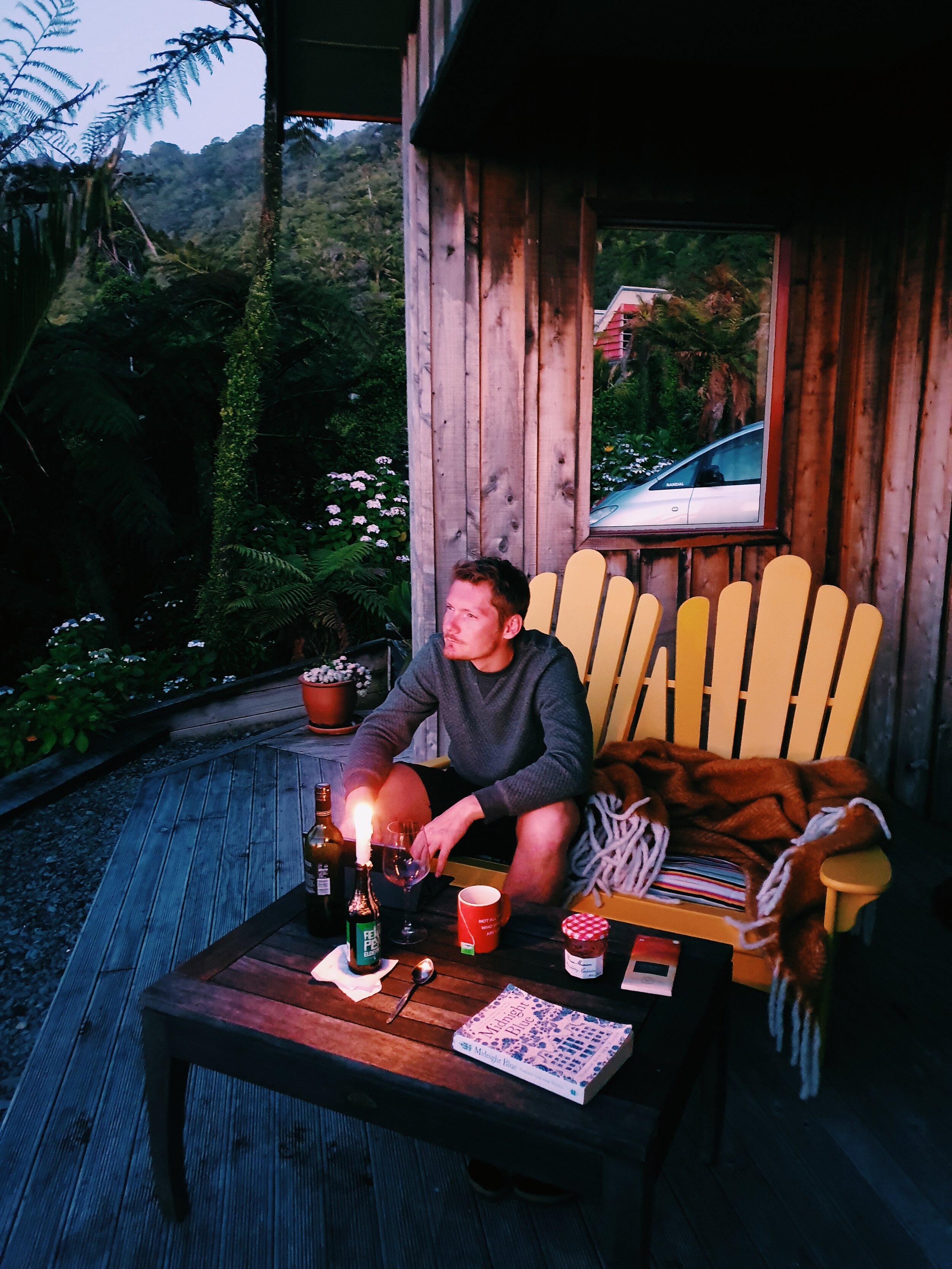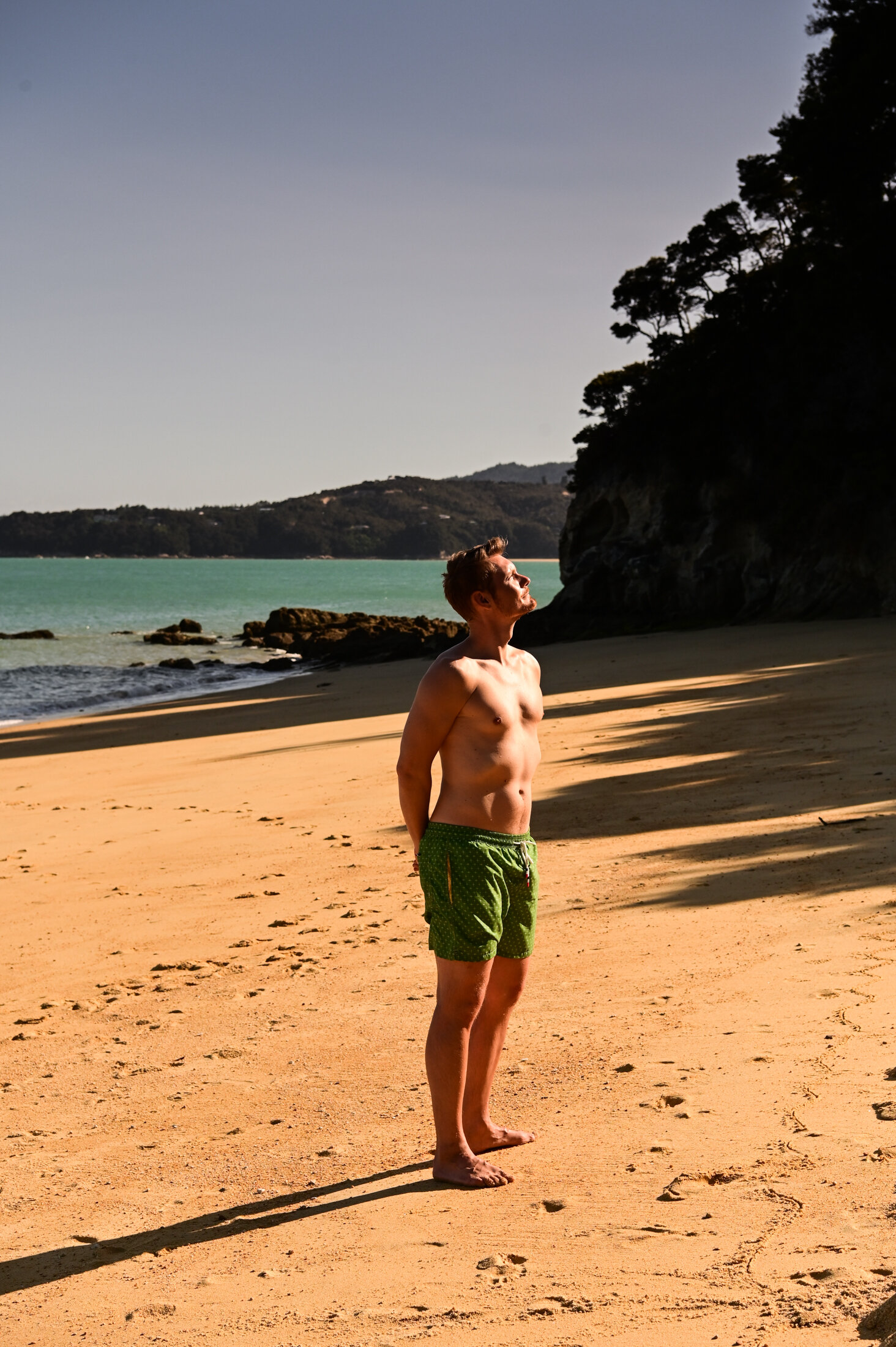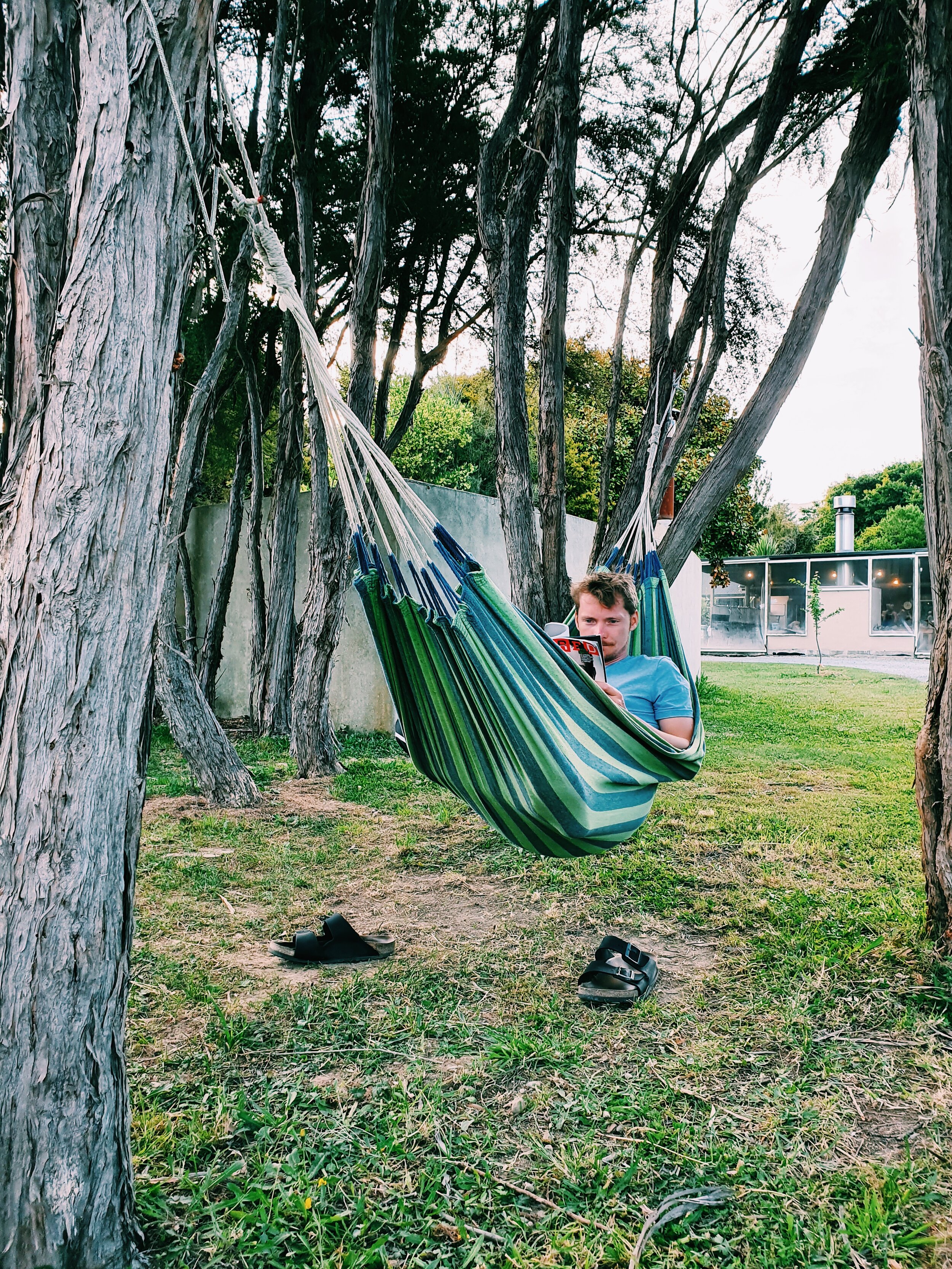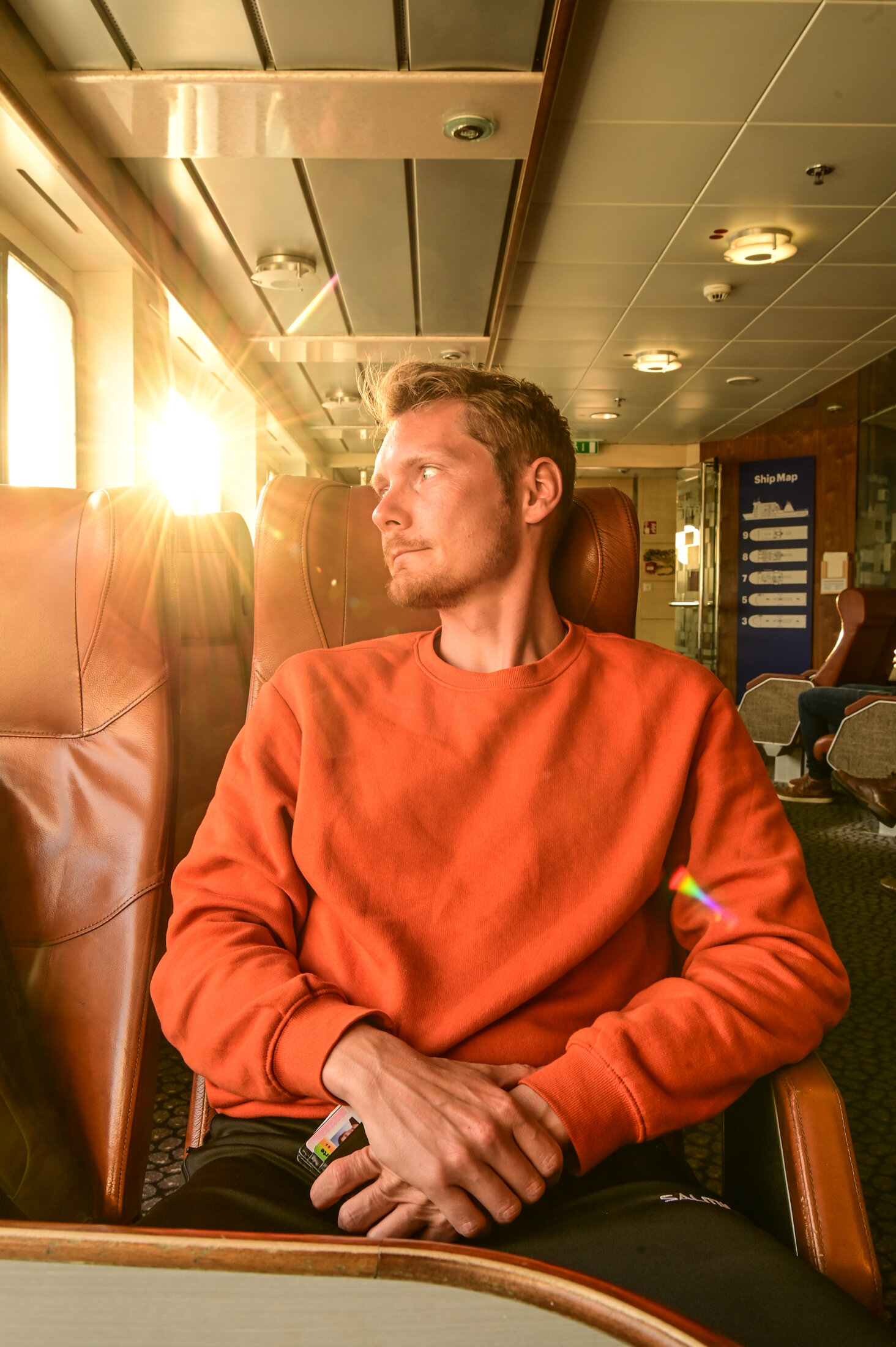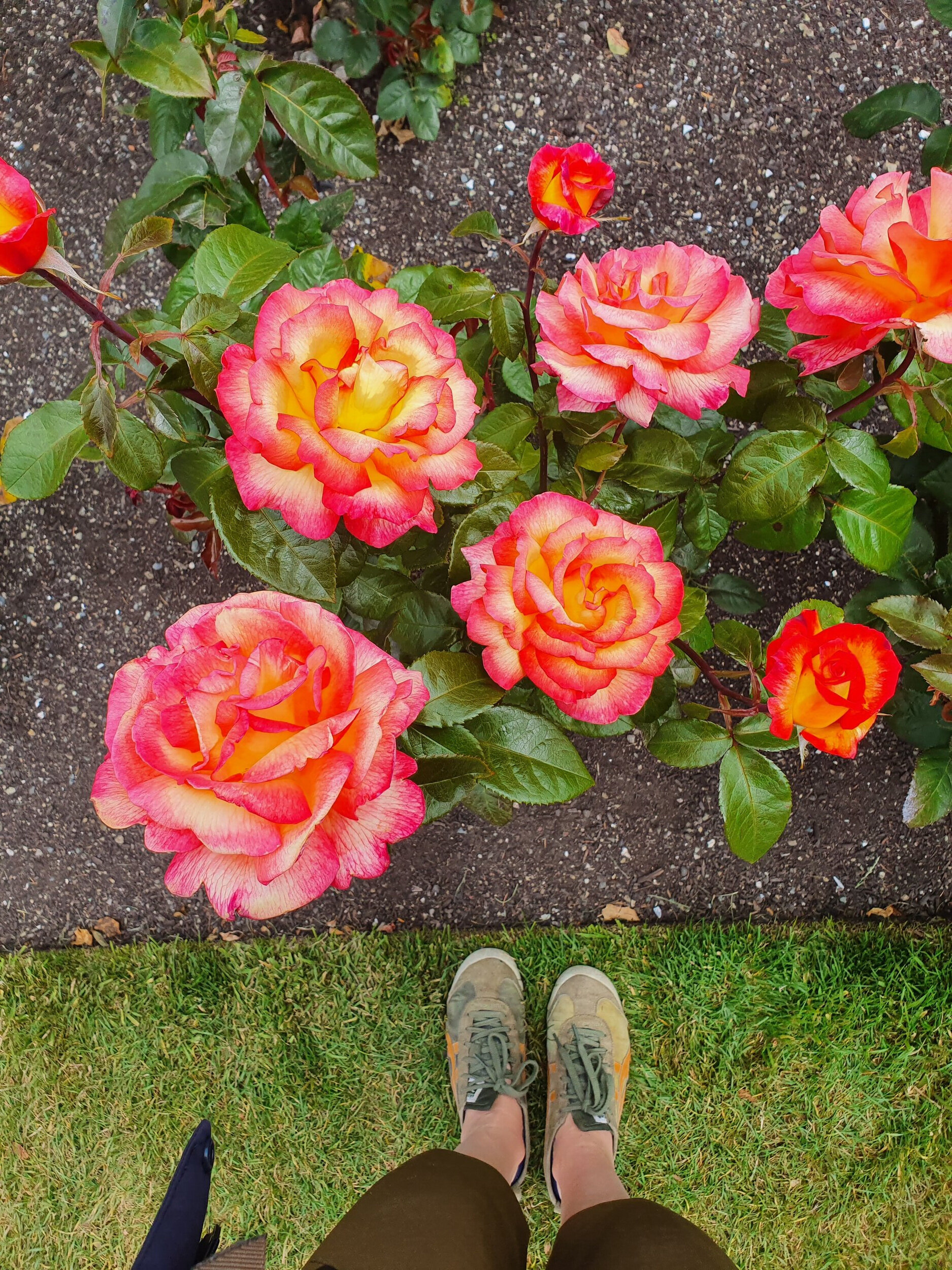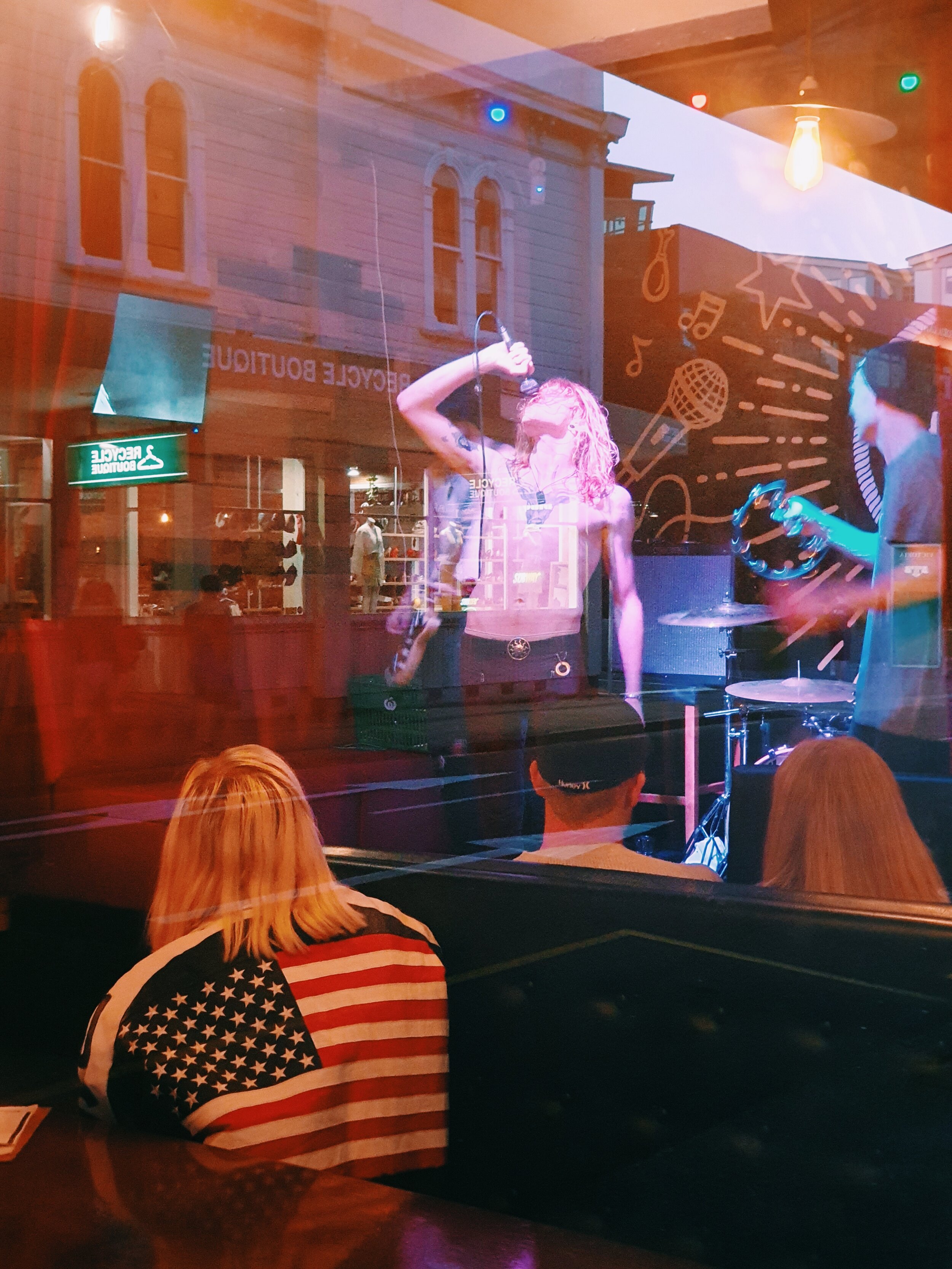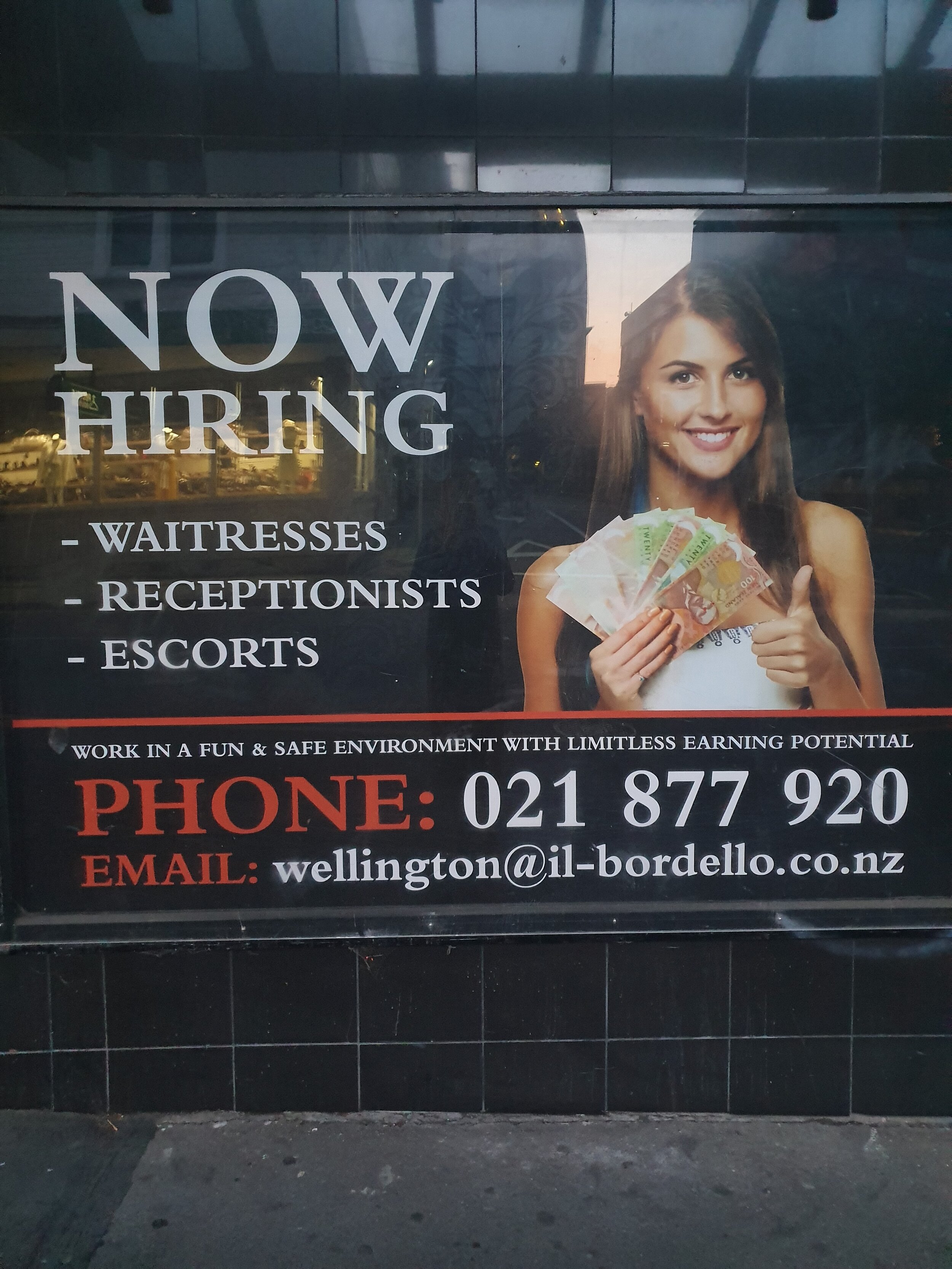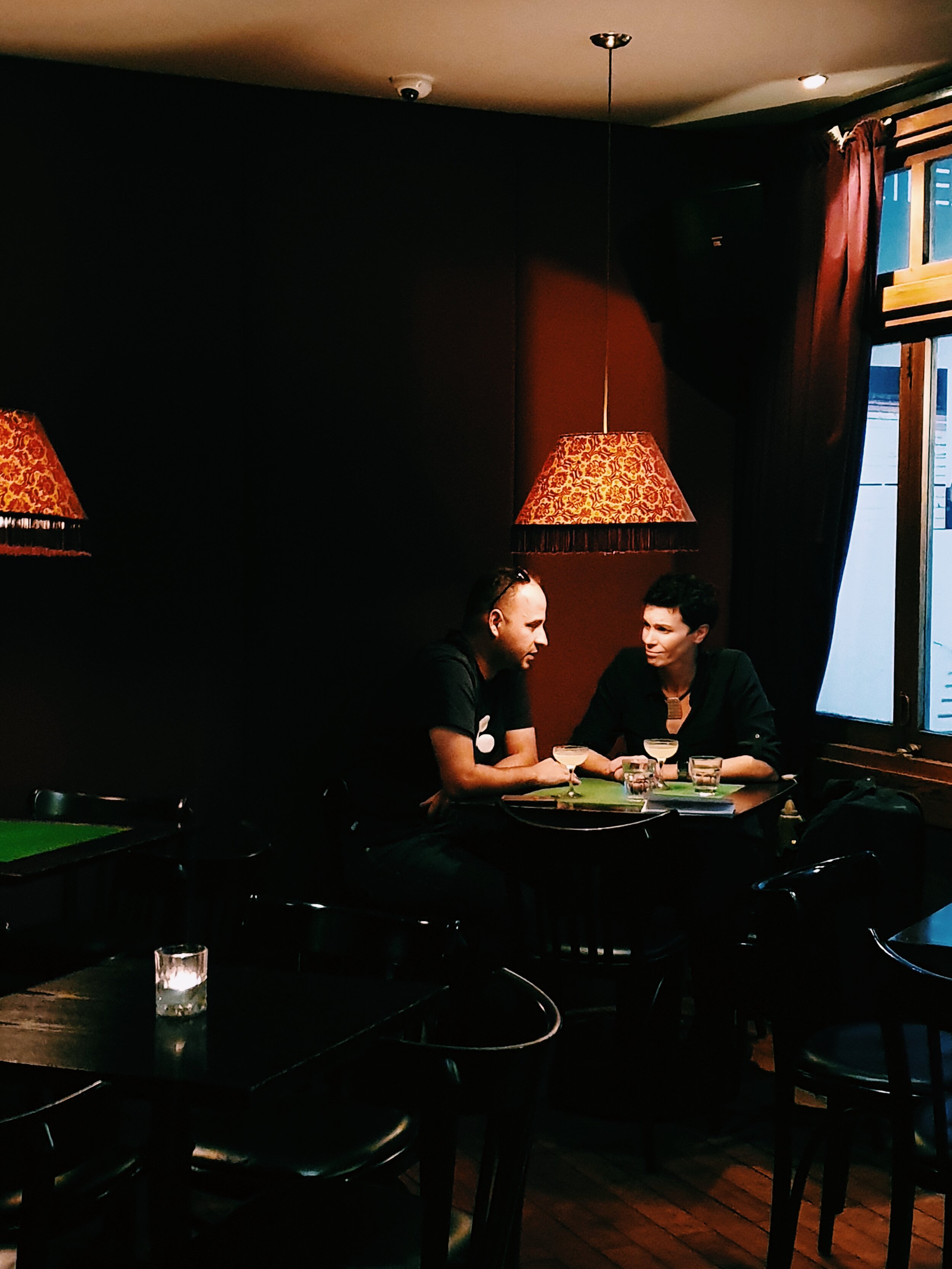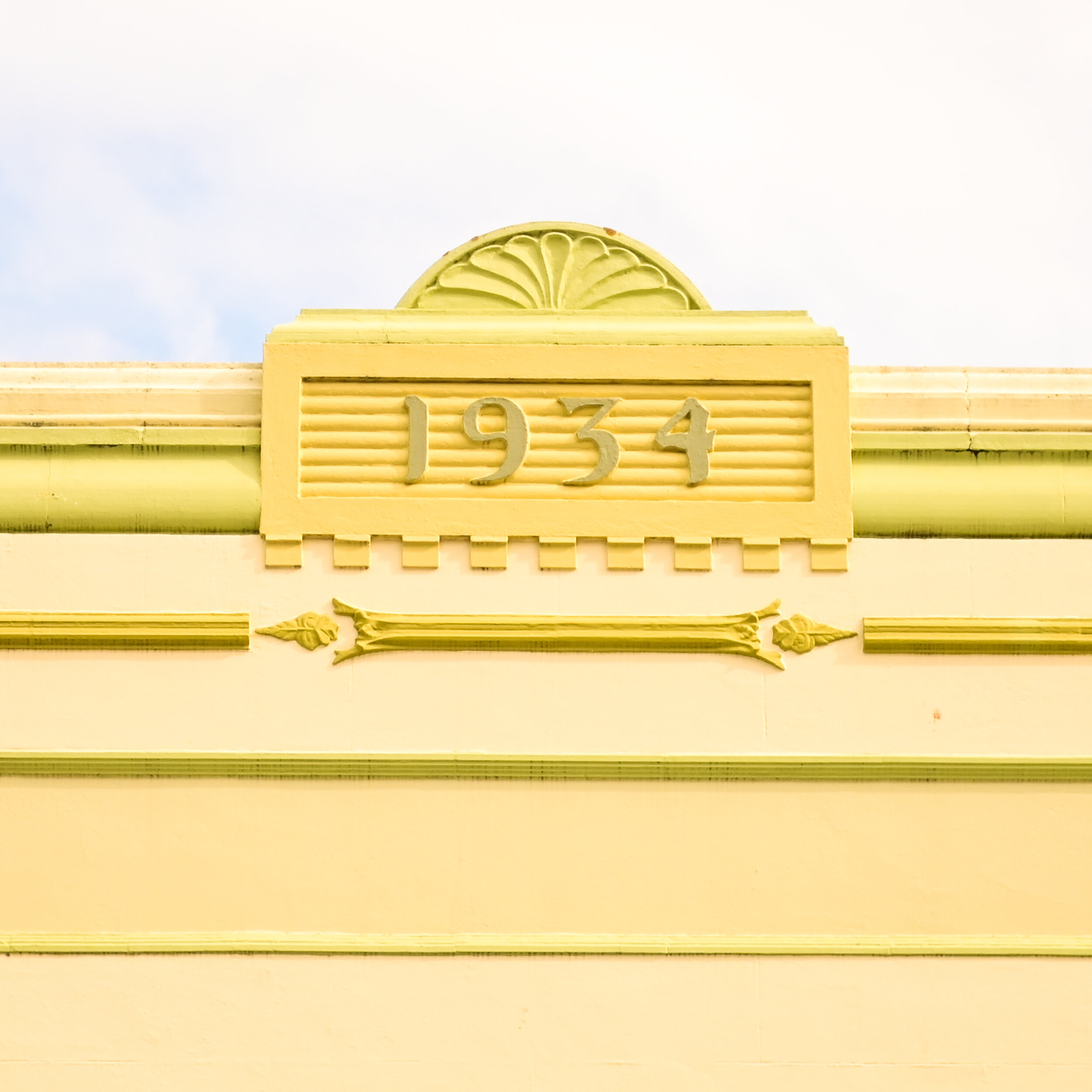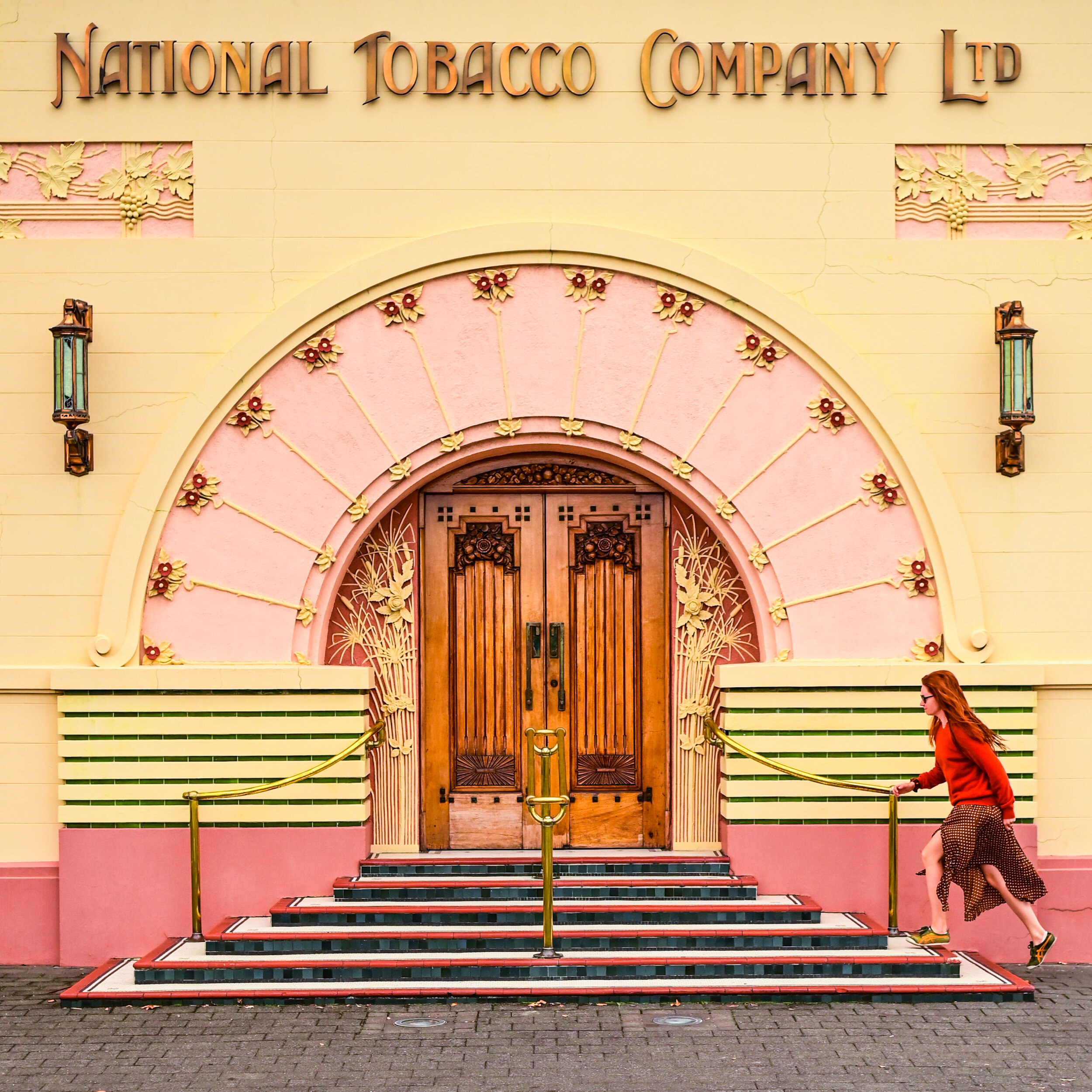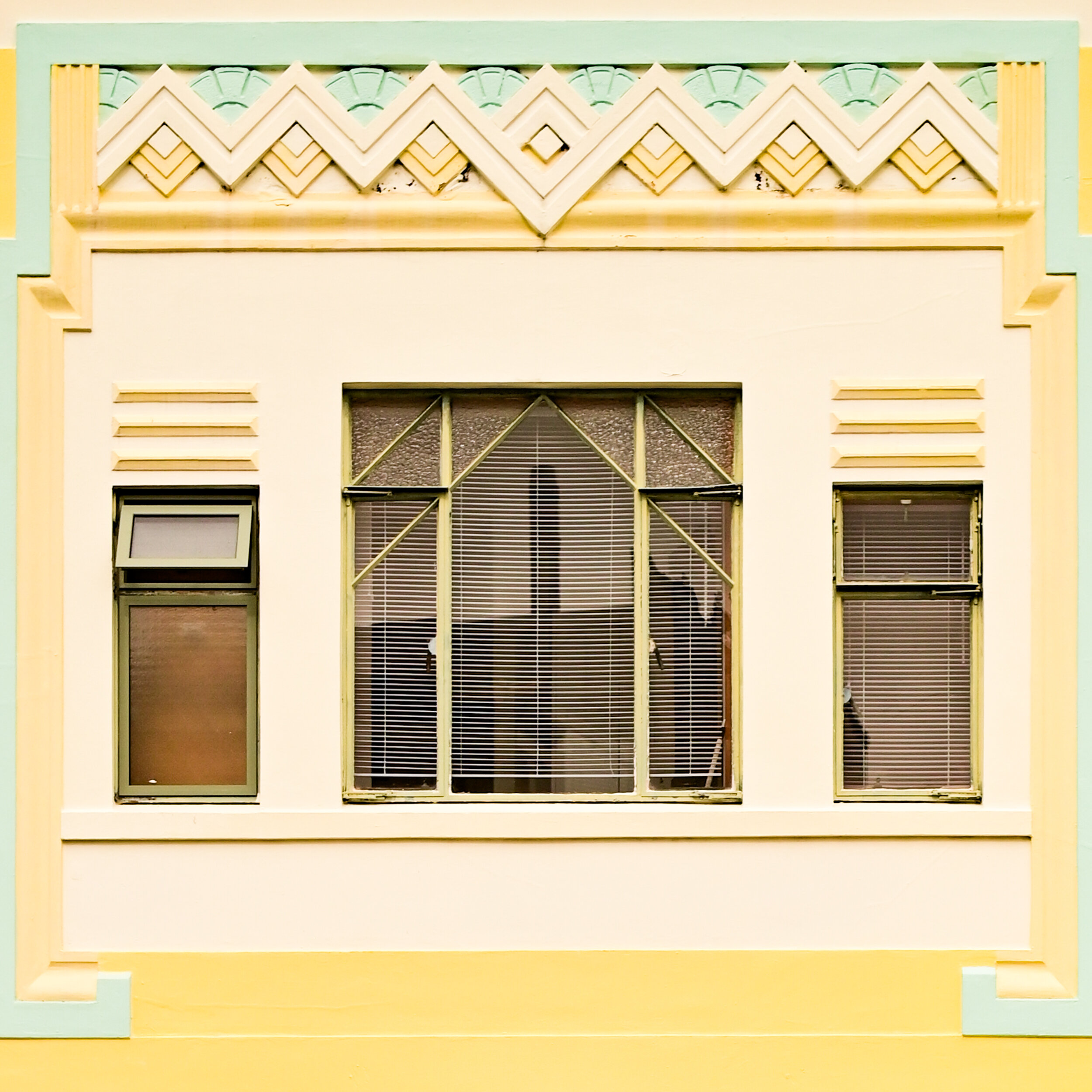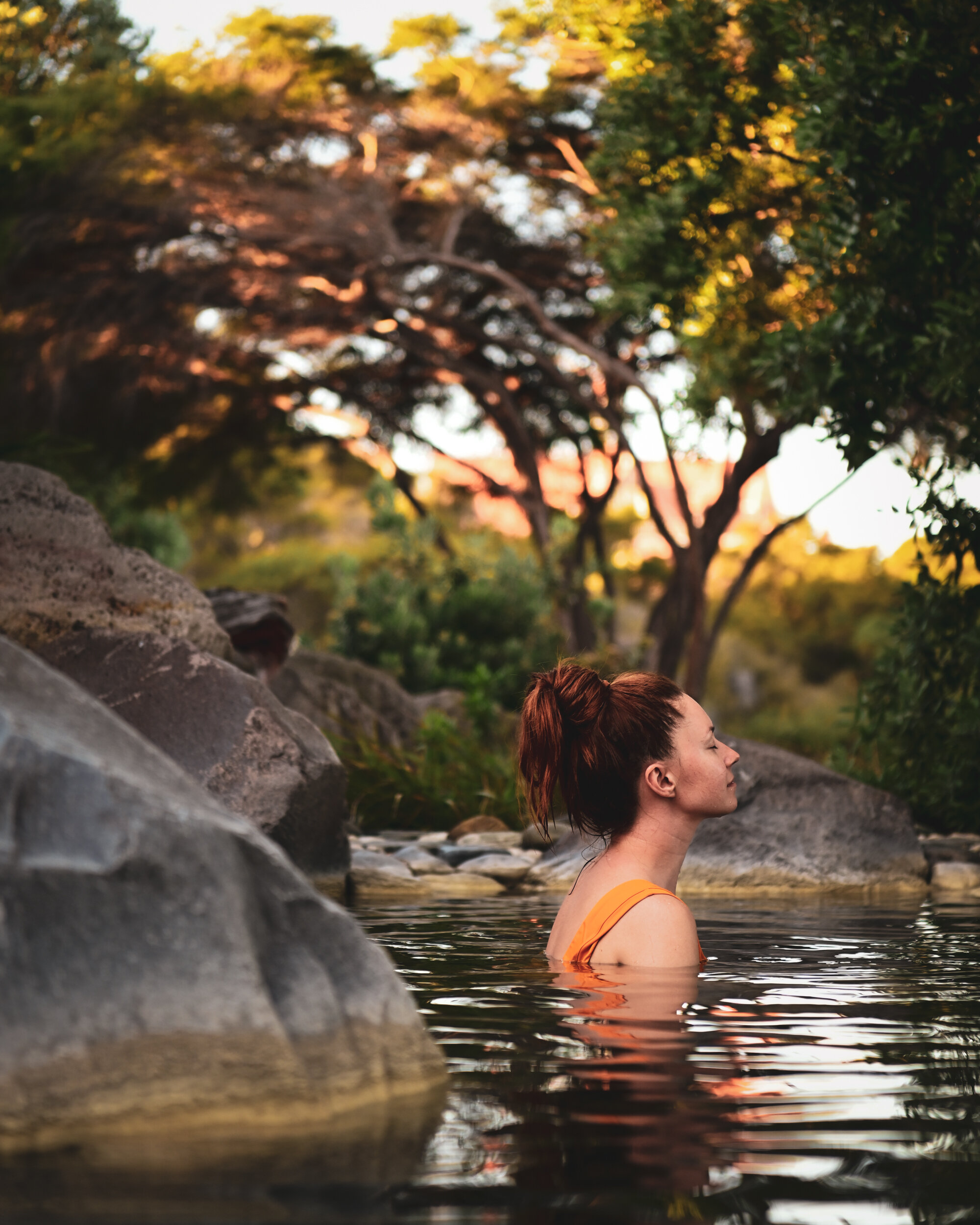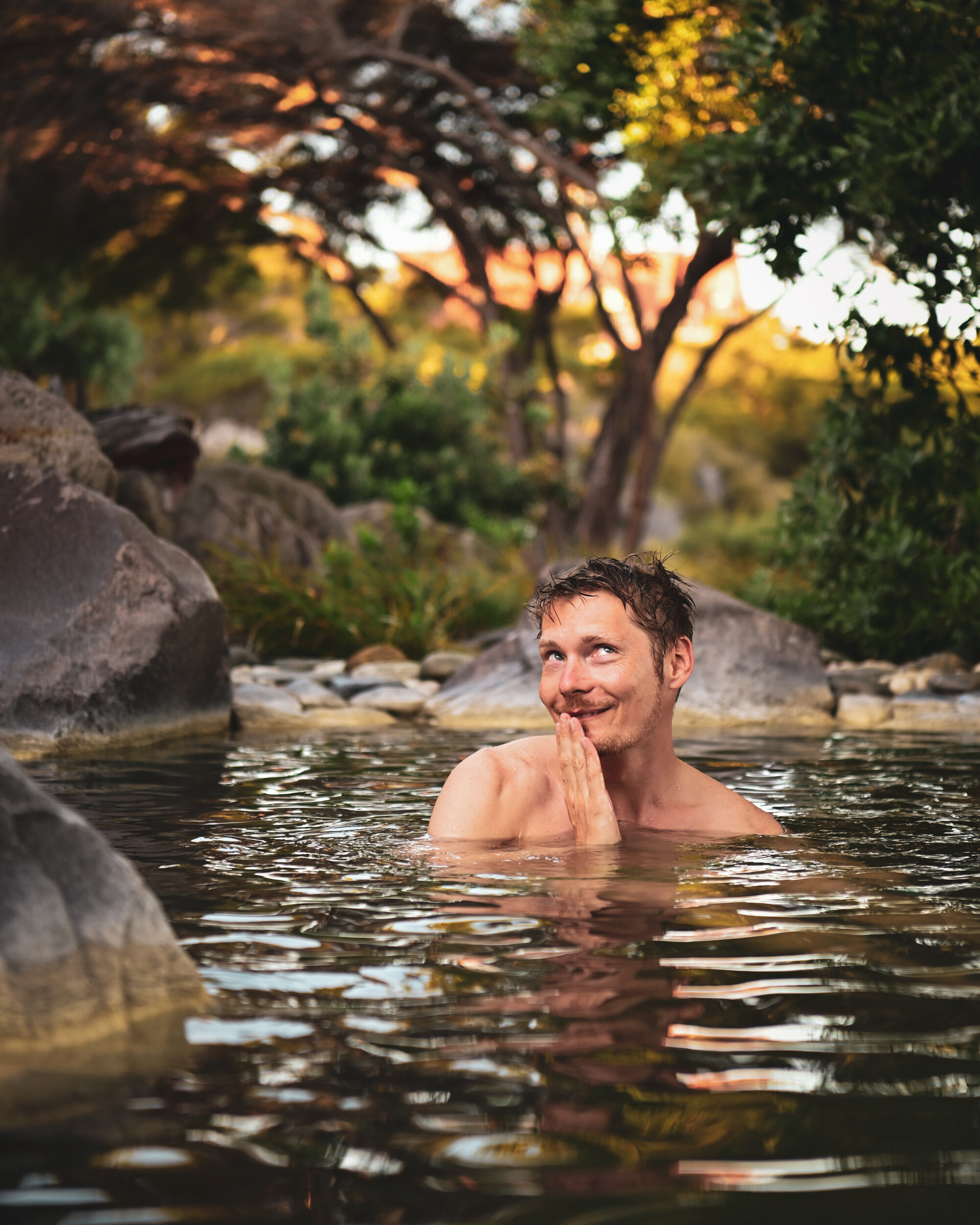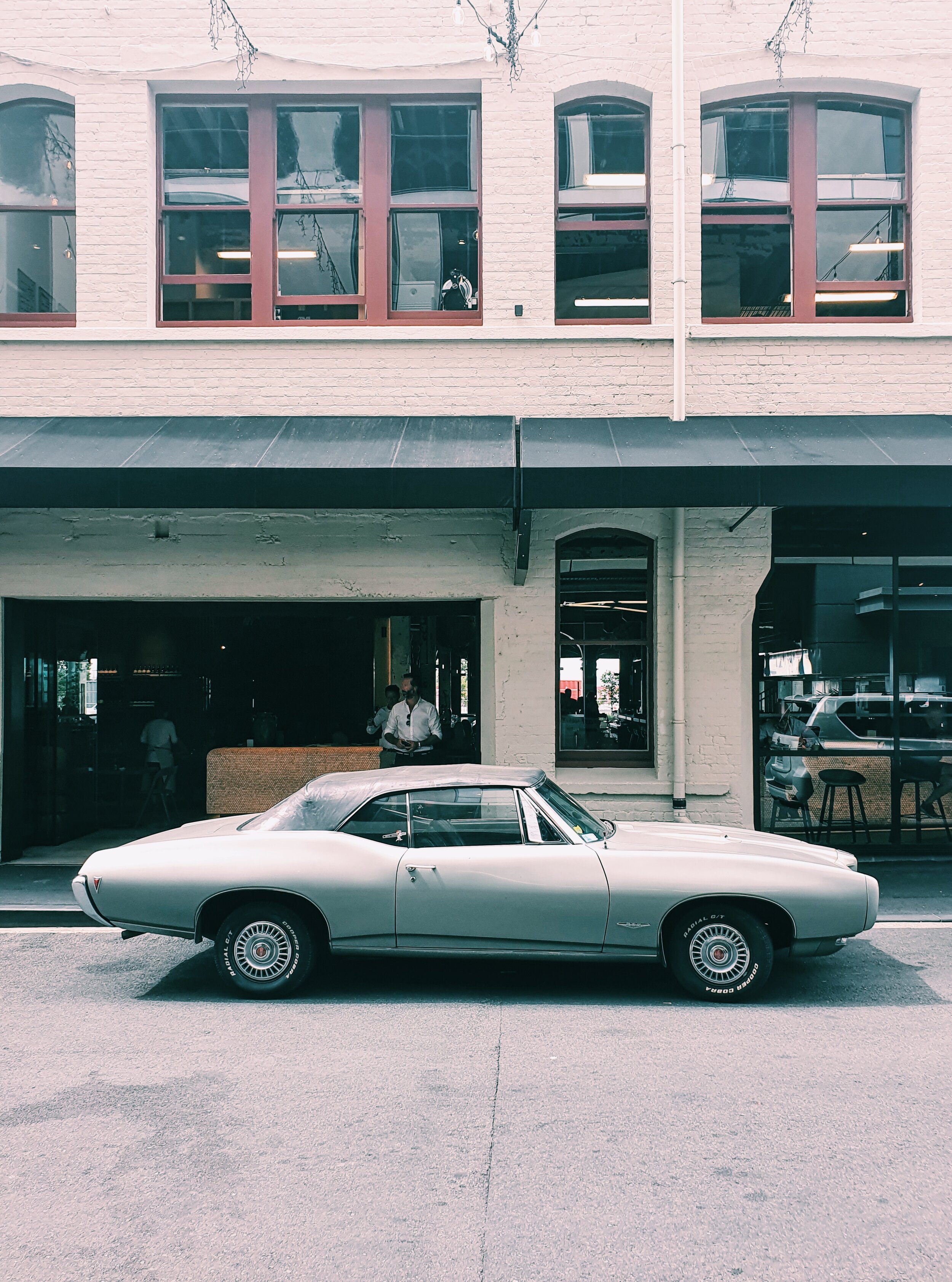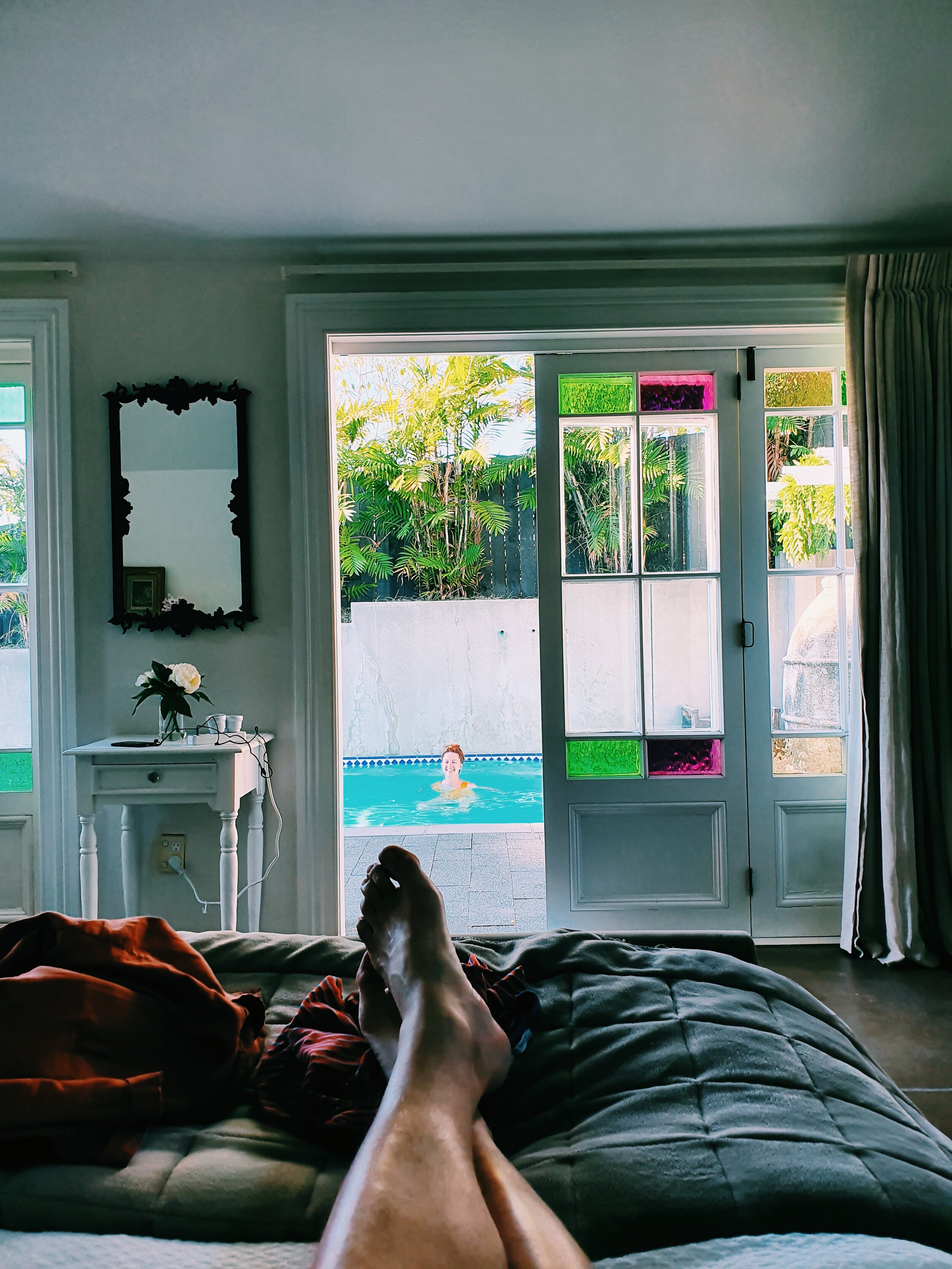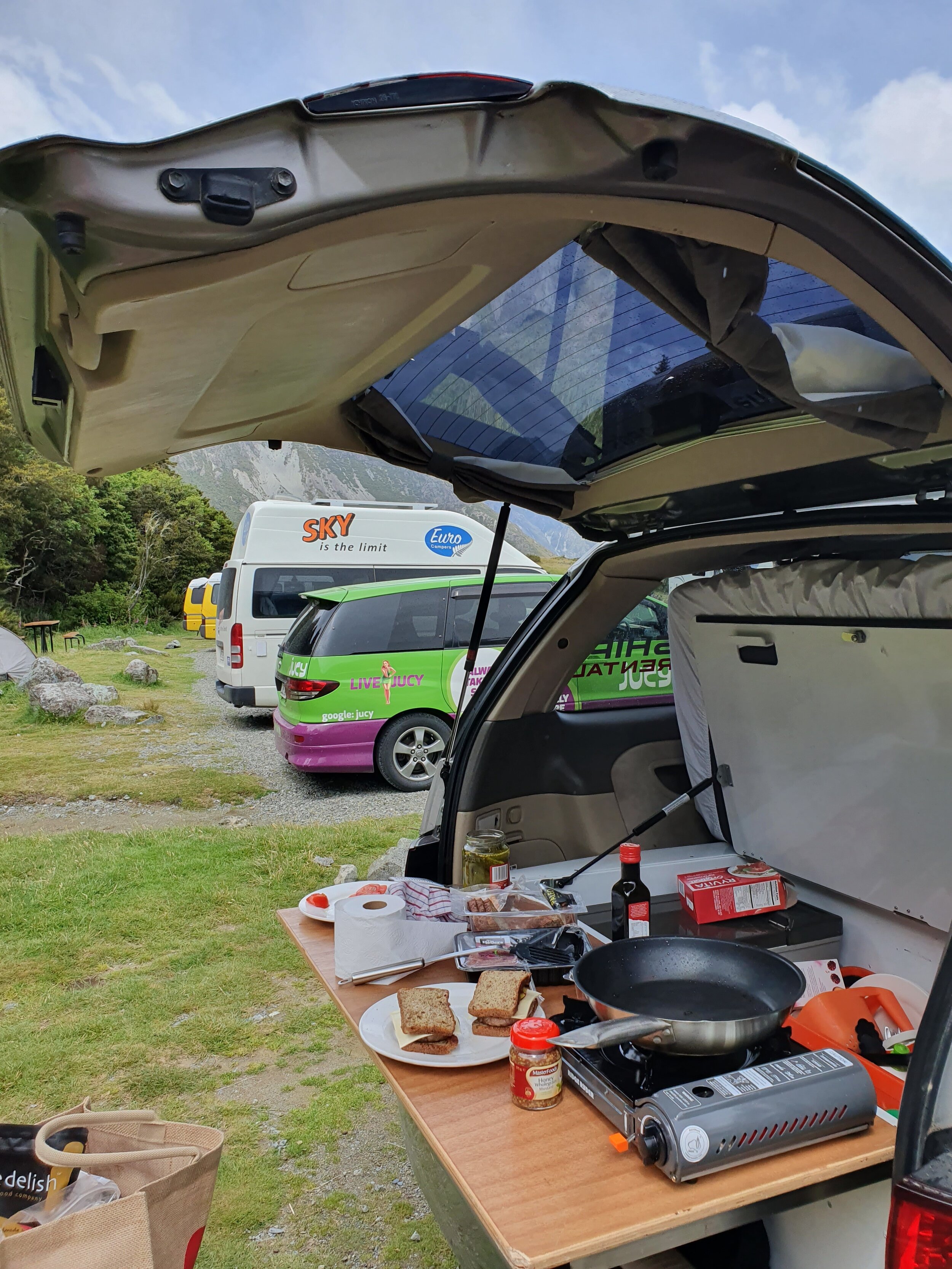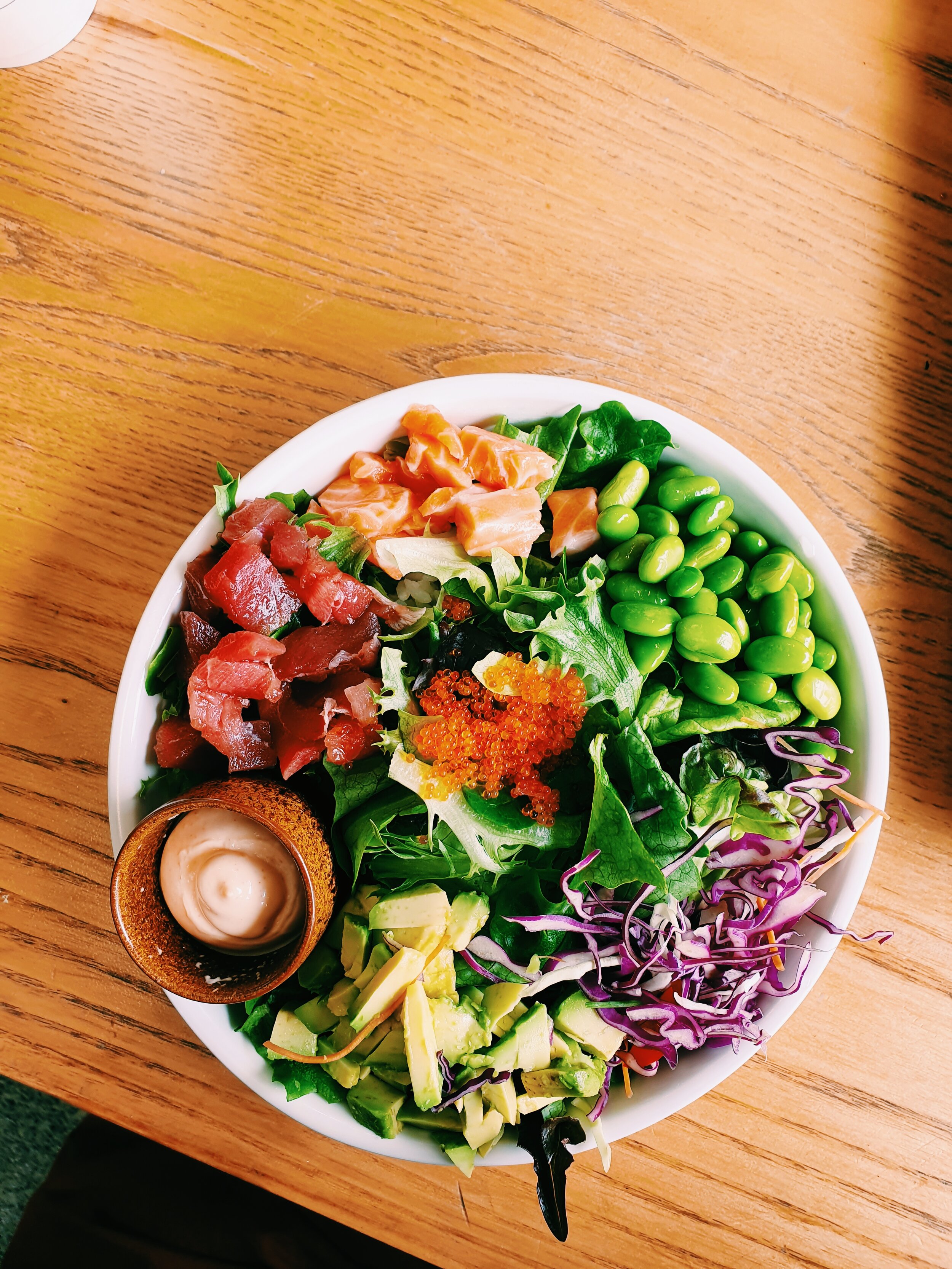3 weeks in New Zealand
I’ve just learned, that the country, where most German tourists are stranded now because of the Corona virus travel restrictions – over 10 thousand – is New Zealand. No surprise, it is hard to find a place more remote from Germany than the „Iceland of the Southern hemisphere“.
Luckily, me and my husband managed to spend 3 weeks traveling around New Zealand just before the current pandemic. Jan even made a stop-over in China’s Guangzhou – with a bit of a panic on his way back, in the end of January.
But in retrospect this almost spontaneous trip was a great decision and I am glad we now (in these days of uncertainty and #stayhome-lock-down) have this adventure to remember.
I am not an overly-budgeting blogger, so I won’t be calculating each and every cent we’ve spent on the trip, but I will give you some basic insights into our main expenses. I am pretty sure, that a lot of things will change after the lock-down, since the tourism business is suffering immensely at the moment.
TIME
1-24th January. High season and middle of summer in New Zealand.
I was a bit scared that there will be too many tourists and even though we had to book most hotels and campsites in advance and they were crowded indeed, most of the hikes and viewpoints were not. Unlike the South of Iceland in summer, the kiwi definition of “touristy” is highly overrated.
BUDGET
For our 3 weeks road trip we’ve spent around 7000 Euros for two people, including flights from Berlin. I am pretty sure, you can do a similar route for half of the money as well, similarly you can spent 20K for a luxurious holiday.
Regarding our finances: I am not a backpacker and never was, neither is Jan. We are adventurous and try to save some cash on our trips here and there, but our general motto is – we only live once. We are also both working adults in our 30s and can afford having a comfortable yet adventurous holiday.
Also, since New Zealand is so far away and takes 1 to 2 days to fly to from any European country (the shortest trips with one stopover was around 24 hours), I wasn’t sure that I would go there again in any foreseeable future, thus I’ve made a plan to see as much and do as much as possible.
The biggest chunk of the expenses were the FLIGHT TICKETS (we didn’t plan in advance and bought them 3 weeks before the trip - surprisingly they were not much more expensive than buying in advance). For 2 people we’ve spent 2500 Euros all together. Note, that we were flying in the high season – January is the middle of summer in New Zealand, so the airfares are usually higher. During low-season you can find a bargain and fly from Berlin to Auckland for as low as 600 -700 Euros.
The 2d big chunk of the budget was renting a CAMPERVAN. Again, we are poor planners – to be honest, I was planning this New Zealand trip for November without Jan, but the situation changed and he came along, leaving us hardly any time to make a thorough plan. Almost all fancier and bigger campervans were booked out, but we’ve managed to find a SPACESHIP basic camper (a kind of outdated and rusty Toyota Estima, but it did the job) and payed 1500 Euros for 18 days with a pick-up in Christchurch and Drop-off in Auckland.
HOTELS/CAMPSITES
We’ve decided to spend nights in both, nicer hotels and cheaper campings. The rule we followed (with a few exceptions) – 2 days sleeping in a camper, then 2 days staying in a hotel – was proved very comfortable already on my road-trip around Namibia 2 years ago. I am not a big camper, but New Zealand is THE country to camp. Either in a comfortable camping with showers, kitchen, toilets and even SPA’s or, if your camper is equipped with a toilet, you can try free-camping in places, where it is allowed. Since our little camper didn’t have a WC, we’ve only stayed in equipped campsites, which are usually more expensive – but you have all the services you need.
The average price for a non-powered CAMPERVAN SITE was around 20-30 Euros/night for 2 people.
Most HOTELS/AIRBNB’s we’ve booked were in the 80-140 Euros/night range. There are cheaper options, but after a few nights sleeping in a car I prefer a comfy bed, nice breakfast, a view and a pool, especially since we’ve saved money camping.
HOTELS I recommend:
South Island:
Queenstown – Nugget Point, a THC Group Hotel. A classy place with ginormous rooms, very tasty breakfast, collection of vintage Nation Geographic magazines (all the way to the 50s) and a tremendous view of a horseshoe band. We’ve spent 2 nights here (130 Euros/Night), which was a steal for a 4-star hotel with great amenities and views.
Franz Josef Glacier – Franz Joseph Oasis. A modern motel with big rooms and nice view. 120 Euros/night for a room with a fireplace.
Punakaiki – Hydrangea Cottages. Hands down my favorite place to stay in New Zealand. Secluded bohemian cottages with beautiful sunset view and an outdoor tub (make sure you book Miro cottage for the tub). 133 Euros/Night.
North island:
Wellington – U Boutique Hotel. A colorful little hotel close to all the action. 80 Euros/Night
Napier – Quest Napier Serviced Apartments. A good hotel to spend a night in the famous Art Deco city. 90 Euros/night
AIRBNB’s:
Christchurch
Auckland
Details from our cozy pool-house Airbnb in Auckland:
CAMPSITES/HOLIDAY PARKS:
South Island:
Lake Tekapo – Lake Tekapo Motels & Holiday Park (was overcrowded when we arrived, but the amenities were great, so book in advance in case you want to stay here).
Lake Pukaki/ Mount Cook – Glentanner Holiday Park Mount Cook (great views of the Mount Cook and surroundings); White Horse Hill Campsite a basic self-service campsite with running water and WC, but no showers.
Fiordland National Park – Possum Lodge (a wonderful little lakefront lodge with only a few campervan places. I especially liked their common room with cozy couches, variety of games and books).
Wanaka – Wanaka Top 10 Holiday Park (nice place with a sparkly clean kitchen and Jacuzzi).
Abel Tasman National Park – The Barn Backpackers (a wonderful campsite with cozy common room, well-equipped kitchen, TV-room with comfortable couches and lots of board games).
North Island:
Rotorua – Rotorua Thermal Holiday Park (the biggest plus of this campsite were the free geothermal pools)
If you made a basic research on traveling in New Zealand, you know, that South Island is considered more beautiful nature-wise and usually attracts more tourists. We considered doing a circle in the South only, but then figured out that we probably won’t go onto another side of the globe again soon, so why not check both islands? I was also excited about the idea of taking the ferry between the too and visiting the art deco city of Napier in the North.
On our trip we’ve met a lot of people, who were traveling for over a month – and honestly, if you have time and money, do so. We’ve also met lots of couples with small children and even babies – and from what I saw, New Zealand is super baby-friendly and also one of the most comfortable and safest countries to travel with a family. There were especially many German couples with toddlers and I assume they were using their paid parental leave time (as some of you might know it is up to 14 months for both parents) to discover the country as well as use the opportunity for babies under 2 to travel for free, which most airlines offer.
Since we had limited time to travel, we went for 3 weeks. Doing a shorter trip would make little to no sense, since you’ll waste at least 4 days traveling back and forth plus a few days of Jet-lag won’t do you good. Since we had limited time, we needed to adjust the trip and skip a few spots, but we still managed to see most of the country’s beautiful locations. Moreover, after 3 weeks of constant moving, I was happy to go back home to Berlin, since there are only that many waterfalls, fjords and beaches you can be excited about in a short period of time.
When searching for the perfect itinerary I’ve looked through Instagram for inspiration plus visited the official website of the New Zealand’s Tourism Board.
They offer itineraries for 3-7, 8-14 and 15plus-day-tours as well as separate tours for only North or South Islands. If you are a lazy ass, just follow their lead, you won’t be disappointed.
Here is our modified itinerary, which turned to be ideal for both of us:
Day 1-3
Christchurch. We’ve decided to spend 3 nights in Christchurch before heading off onto a road-trip. We needed time to fight the Jet-lag and acclimatise. Christchurch is a small town, it was heavily damaged by the 2011 earthquake and the signs of destruction are still very visible.
We loved the rough beach, the botanical garden and the Christchurch Art Gallery. I was especially pleased to see, that almost 50% of all art in the museum was by female artists.
We also stumbled upon the Ferrymead Heritage Park – an open-air museum outside of the city, which offers a glimpse into the life of the early-20th-century New Zealanders. Despite high season, we were the only people in the whole “settlement”, which reminded me of the Bodie ghost-town in California.
Day 4-5
Lake Tekapo and Aoraki National Park. Lake Tekapo is an ultimate instagram attraction because of the millions of lupines, growing here in spring and summer. We stayed 1 night here, also visiting the local hot springs before heading to Lake Pukaki and Mount Cook/Aoraki.
Aoraki National Park, despite the rain and at moments even snowy weather, was one of the highlights of our trip for me. I wanted to do some hiking and we managed to do two 5-hour hikes in one day – Hooker Valley track – one of the most popular short tracks with amazing views and little elevation and the Sealy Tarns track, which ended up being a constant 3-hour climb up the hill.
Day 6-8
Queenstown. On the way from Aoraki to Queenstown we made a quick stop NZ ALPINE LAVENDER – a small lavender farm, which I suspect only operates for tourists. For 5 NZ $ (less than 3 Euros) you can enter the small lavender field, take pictures and buy a lavender ice-cream and some souvenirs in a kiosk afterwards. A “why not?” rather than “must-see” experience.
After another hour of driving we’ve made a 2-hour stop at HOT TUBS OMARAMA, which I highly recommend. We’ve slept in our van for 2 previous nights, so soaking in the hot water with a view of a pristine little lake was a great and very relaxing experience. One should book a private onsen in advance, especially for the sunset.
Hot tubs Omarama
Queenstown is without a doubt the adventure capital of New Zealand. Rafting, speed-boating, canoeing, biking, sky-diving – you name it.
We did the SHOTOVER RIVER JET BOAT adventure – rather expensive (120 Euro p.P.) 40 minutes jet-boat ride through the narrow canyons of the Shotover river. It was fun, but IMHO not worth the money.
Instead, I preferred the QUEENSTOWN LUGE – tremendous views, fun luge rides down the hill and a relaxing gondola ride up and down. 40 Euros for a package of a gondola ride plus 5 luge rides was money very well spent.
For those tourists with little time and flexible budget, I’d recommend to take a scenic helicopter or plane flight from Queenstown to Milford Sound. It takes less than 45 minutes to fly there and over 4 hours driving. The flight together with a 2-hour cruise through the famous sound (the New Zealand name for a fjord) would cost you around 350 Euros p.P.
We had some time on our hands and I wanted to see the Doubtful Sound as well, so we drove instead.
Day 9 1/2
Fiordland National Park. Part of New Zealand, which reminded me most of Scandinavia and Iceland. Mosts people come here to see Milford Sound, day-trips with busses and helicopter flights are available from both Queenstown and Wanaka.
Fjordland is considered one of the rainiest places in the world, with over 200 rainy days per year. We’ve managed to come to Milford Sound on a sunny day, which was a nice change, but a disappointment for many photographers on our cruise. Next day we went on an early cruise to Doubtful Sound, which met us with gloomy weather and much expected rain. Both sounds are magnificent, with Milford being more accessible and I can only encourage you to book a cruise with one of many companies, offering 2-4 hour cruises.
In order to make our 7 AM Doubtful Sound cruise, we stayed in a village of Manapouri, where we had dinner in a burger place, operating in an old church (The Church Manapouri).
Day 9 1/2-11
Wanaka. A trip from Fjordland to Wanaka was uneventful, luckily we were listening to true crime podcasts to kill the time. If anyone’s interested – Root of Evil: The True Story of the Hodel Family and the Black Dahlia is a creepy one, which will make you feel normal about your own family no matter what.
Another two podcasts we listened to on our trip were the 1st seasons of Serial and My Favorite Murder, which is now one of my to-go podcasts, combining true crime with humor of its two charming hosts.
Wanaka itself was a nice place to stay. We saw the famous Wanaka tree and made an epic and exhausting climb up to the Roy’s Peak, which provided one of the most memorable and amazing views I’ve encountered on this trip.
Day 12-13
West Coast. If you are looking for a spectacular drive – look no more. I’ve seen a few breathtaking coastline drives in my life (Pacific Coast Highway in California, Namibian Skeleton Coast and Amalfi Coast in Italy among others), but the West Coast of New Zealand’s South Island can easily compete if not top them.
We spent one night next to the Franz-Josef glacier and took a 2-hour return hike to the glacier’s viewpoint. After we made a stop-over in the former golden-rush capital and now almost-deserted town of Hokitika (you can read about golden rush in New Zealand in Eleanor Catton’s award-winning novel Luminaries) and spend a wonderful sunset and night in Punakaiki, with its breathtaking Pancake Rocks viewpoint and serene beaches. If we had more time, I would definitely spend more time in Punakaiki, just relaxing and reading books in our rented cabin.
Day 14-16
Abel Tasman National Park. Finally summer! After 2 weeks of moderate temperatures, only comparable to German October, we arrived to a warm paradise. Abel Tasman National park is a car-free zone and you can enter the park either from the North or from the South. In the South we’ve stayed at a great campsite (the Barn Backpackers), only a hundred meters away from the park’s entrance.
Many people do a 4-5 days coastal hike, with overnight options in several huts and campgrounds along the coast, but we’ve decided for a sea-kayaking rental and a 4-hour wave-fighting and exhausting paddling to Torrent bay, where we dropped the kayak for another 3-hour hike back to our camp. The hike was great, with many viewpoints and beaches on the way, while kayaking in the open sea was a serious challenge, both of us didn’t enjoy. Fun for the first 20 minutes, it turned out to a constant battle against the Pacific Ocean.
Day 17-18
Island Ferry & Wellington.
The ferry ride along the Cook Strait between the South and North Islands at sunset was a great experience. There are 2 popular ferry companies operating between Picton (in the South) and Wellington (in the North), one being the Interislander and the another one Bluebridge. Be prepared to pay between 140 and 160 Euros for a van with 2 people for a 3-3.5 hour crossing.
We arrived to Wellington late and stayed for 2 nights. Capital of New Zealand is nothing particularly spectacular (unless you are my husband, who loved it a lot), but we enjoyed the botanical gardens a lot. If you want to see more Wellington and why you shouldn’t stay there for too long, I’d recommend watching Wellington Paranormal – a hilarious mockumentary series, directed by Jackie van Beek and Jemaine Clement (“Flight of the Concords”, “What We Do In The Shadows”).
Day 19
Napier. This beautiful little town is often overlooked by tourists, but it is truly one of New Zealand’s architectural gems. About 8 years ago, I’ve found a poster on the street, which said “Destination: Art Deco Napier”. I ignored this name for a long time, until I managed to google it to discover, that Napier is one of the world’s capitals of art deco architecture. After it was badly ruined in the 1931 earthquake, most of its city center as well as a few residential areas were rebuilt in a distinctive art deco style. It is truly a photographer’s paradise, still not crowded (and probably in need of a tourist cash flow – my humble observation).
Day 20-21
Rotorua. This Northern town is a famous geothermal area and the center of the Maori culture. We’ve managed to experience both – visited WHAKAREWAREWA – THE LIVING MAORI VILLAGE and the POLYNESIAN SPA, plus did a fun rafting adventure with a 7-meter waterfall drop!
In Rotorua we camped for our last 2 nights and natural geothermal pools in our holiday park was a nice addition.
Day 22-23
Auckland. On the way from Rotorua to Auckland we made a short detour to Waitomo glowworm caves – who’d think that caving can be so mesmerizing. Unfortunately, it was forbidden (and too dark) to take pictures but taking a boat through a pitch-black cave filled with glowing insects was a “woooooow!” kind of experience.
Many people I’ve talked to recommend skipping Auckland all-together. I found it great. Probably I’ve had enough of nature already and getting back to a busy city was a sweet relief for my urban soul. More likely, Auckland is a great city with a mild climate, San Francisco-esque vibe and great restaurants – and that is why I liked it. We managed to find a perfect Airbnb in the residential and hip Herne Bay – a small pool-house behind an old mansion, with the view of a pool. Auckland met us with great weather and was a perfect conclusion to our amazing 3 weeks in New Zealand.
Restaurants I liked in Auckland:
Dear Jervois – was a great brunch place next to our Airbnb.
Andiamo Eatery (be prepared, that Italian food in New Zealand is great, BUT a bit different from real Italian).
&Sushi – best sushi and poke boles I’ve tried in NZ, even though sushi and poke bowls were generally great.
Auckland Fish Market – a place with a variety of food vendors selling fresh oysters, sushi, poke and drinks.
FOOD in New Zealand:
Is great.
While camping we’ve cooked quite a lot and supermarket prices were similar (a bit more on the expensive side) to Germany. We had all the cooking equipment in the van but often used fully-equipped and cozy camping’s kitchens.
Most of restaurants we’ve eaten at proved to be great – I loved the quality of the sea-food, especially sushi and poke bowls. The prices were also surprisingly comparable to Berlin – a casual dinner or brunch for two in a good mid-price range restaurant would cost around 30-40 Euros for 2 people. Again, you can always find cheaper versions, there were plenty of choices anywhere we went.
***
I know it is weird to post a travel itinerary in the middle of the world’s biggest lock-down. Nevertheless, I am looking on a bright side and hope that this article and my personal experience will help you plan a nice future holiday without any last-moment rush. If you have any particular questions about our trip, drop me a line!
3 days in Southern Bolivia
Last March I had couple of firsts. It is not what you think of course. Though for that matter, I don’t know what you think at all. This month I’ve seen the most beautiful sky in my life. In the middle of nowhere, southwest Bolivia, with no internet, mobile network or shower, I’ve seen a face in the clouds – and thought that since I am so far up in altitude, I must really be close to heaven.
This month I’ve been to another planet as well – the planet of salt and white clouds. I don’t think I’ve ever seen so much white in my entire life. If I imagined heaven, that would be the best depiction of its entrance.
We arrived at Uyuni; a small village with a market, church and couple dozen travel agencies in the early morning. The last two hours on the bus ride on-route were quite bumpy – since there are no paved roads to this remote part of the world. That remote part: in Bolivia’s southwest, the Potosi region.
After a quick coffee, which was surprisingly bad everywhere I went in South America, we headed to the travel agency of our choice – I bet they are all the same, providing basic services for a three-day tour around the salt flats and surroundings.
The three-day tour we booked was modestly price at $130, which after a short negotiation could have been dropped to as little as $80 for three days all-inclusive.
We ended up in an all-women group of six plus our nice local driver, who didn’t speak a word of English. However, luckily, my teenage obsession with South American soap operas paid off and I could ask basic questions and even understand 40% of the answers.
The driver packed our bags on the top of his four-wheel-drive, together with the gas for the whole trip – not so surprisingly; there were no gas stations on the way.
The first stop on the way was an amazing old train cemetery. Uyuni was a transportation hub, with trains carrying minerals from local mines to the Pacific Ocean ports. After the collapse of the mine industry in the 40s, many trains and railways were abandoned. Old trains remain a memory of the past prosperity and hopes.
The location would be more spectacular without the hundreds of tourists jumping around and taking selfies with a stick. I suppose though any beautiful place in this world is doomed the moment it is discovered or mentioned in the Lonely Planet guide.
Our next stop was an artisan market a few kilometers away from the start of the actual salt-flat – another tourist trap. Nevertheless, it had a small museum with huge statues of animals and people carved out of blocks of pure salt. Guess how many people tried to lick them.
After a stop at the market, the main part of our journey began. It was all absolutely amazing, with not a single boring moment in it. Skipping further superlatives and descriptions and accelerate on my story, here are the main stops on our three-day tour:
Salar de Uyuni
Arriving at Salar de Uyuni, the world’s largest salt flat is similar to arriving at an unknown, deserted planet. Spread for more than 4,086 sq. miles, Salar is the flattest place on Earth, with an average elevation of maximum one meter over the whole area. To put it in simple words, driving on the salt flat is like skating on butter – seamless and incredibly smooth.
Located at an impressive elevation of 11,995 ft. above the sea level, the salt flat was formed from several prehistoric lakes, which dried out and formed a thick salt crust, covering a pool of brine, that’s exceptionally rich in lithium. To further impress you, the area contains 50 to 70% of the world’s lithium reserves – guess how many billion Duracell batteries one can make of this.
Enough with scientific facts. I have been to many places on Earth, but nowhere I felt was more eerie and close to heaven than in Salar de Uyuni. After escaping the dozens of tourists at the beginning of our trip, we followed into the pure endless whiteness – so blinding and extraterrestrial I couldn’t speak for the first hour of the journey.
We were lucky with the weather and season we chose for our trip. The best thing you can experience in Salar de Uyuni is the reflection of the sky and clouds in the water covering it in some places. This creates an illusion of you flying in the sky. This phenomenon is only possible to see two months a year – February and March, when it is rainy. The rest of the year, the surface is a cracked crust. There are also several islands – ones of their kinds, situated in the middle of a dry salt flat. The biggest is named Incahuasi, with giant cacti growing on it.
After hours of driving through the salt flat with numerous stops for pictures and videos, we arrived back on land, where we slept in a home-run hotel, entirely made of salt-bricks, cut out of the salt flat. The service was basic, but being in the middle of such wilderness, I couldn’t ask for more than a good meal and a good night sleep.
Laguna Colorada
The next main attraction on our trip in was the beautiful Laguna Colorada. Its bright red color contrasts perfectly with the gloomy landscape of the Eduardo Avaroa Andean Fauna National Reserve. After paying 150 Bolivianos for the entrance to the reserve – around 20 Dollars, which is quite expensive by the local standard – we arrived at the beautiful Laguna, which is also home to thousands of pink flamingos. The red sediments and pigmentation of some algae, which serve as food for the birds, cause the reddish color of the water.Temperatures at such high altitude remain quite low and even go bellow freezing at the nighttime. Flamingos remain in the water during the night, standing on one leg. Our guide told me that sometimes the water freezes, catching a flamingo in a natural trap. Nevertheless, when the sun comes out and the ice melts, the birds are free again.
Stone tree Another picture-worthy stop was the stone park with the particularly photogenic Árbol de Piedra “stone tree”, which is an isolated tree-shaped rock formation in the National Reserve about 11 miles north of Laguna Colorada. With the soft sandstone the tree is made of, the sand, blowing with the strong winds of the dunes, surrounding this weird rock formation, eroded it. Needless to say, there are a thousand of pictures with people trying to move the stone. Unsuccessfully.
Laguna Verde
Laguna Verde, or a Green Lagoon, is a tricky place. Situated near the borders of Chile and Argentina, this salt lake has a very boring muddy color on a windless calm day. When we arrived at the Laguna, I couldn’t believe my eyes. Google promised me shades of turquoise and emerald I’ve never seen before.
Nevertheless, the guide told us to stay calm and wait for the wind to start blowing. Apparently, the green color appears only after the motion, produced by the wind, disturbs the sediments in lagoon. We waited patiently and got granted by a miracle – after the breeze started, the color of the Laguna started changing in front of our eyes.
Stone towers cover the area around the lagoon – the legend says, that a person, who builds a tower in this sacred place, will get one wish fulfilled. I built one of course.
Geysers
The third day of our tour started as early as five o’clock in the morning with our arrival at the local geysers Sol de Manana, near the crater of an active volcano, at an altitude of 16,000 ft. The presence of lava formations and geysers made me unconscious think of Iceland, where I spend some time in January. The area is full of boiling mud and really loud natural bubbling – a very unique experience, which should not be missed. The Bolivian government tries to use the geothermal power for electricity production, but the project is still in the early stages of development.
Hot springs
Hot springs, Aguas Calientes, some 30 minutes away from the Laguna Verde with a majestic sunrise view had another uncanny resemblance to Iceland. For a very modest price of three Bolivianos – less than 50 cents – you can treat yourself with a relaxing dip into a small pool, surrounded by mountains and lakes. Perfect hot tub temperature provided us with the energy for the rest of the trip and definitely made my day.To sum up, the three-day trip in southwest Bolivia was my most prominent impression from South America. Note: Those due to the high altitude, a lot of people can feel unusually dizzy, experience headaches or even nosebleeds and vomiting. I would recommend for those too sensitive, to acclimatize a couple of days before going on a trip – it is not very physically demanding, but at 15,000 ft. and above, climbing even a small hill can feel like a serious hike. Guides sometimes provide you with coca leaves, which can be chewed or consumed as a tea. They are totally legal here and help to fight the altitude problems.
All in all, Salar de Uyuni and its surrounding is an impressive once-in-a-lifetime journey – one that will provide you with photos, stories and Facebook statuses for a long, long time.

